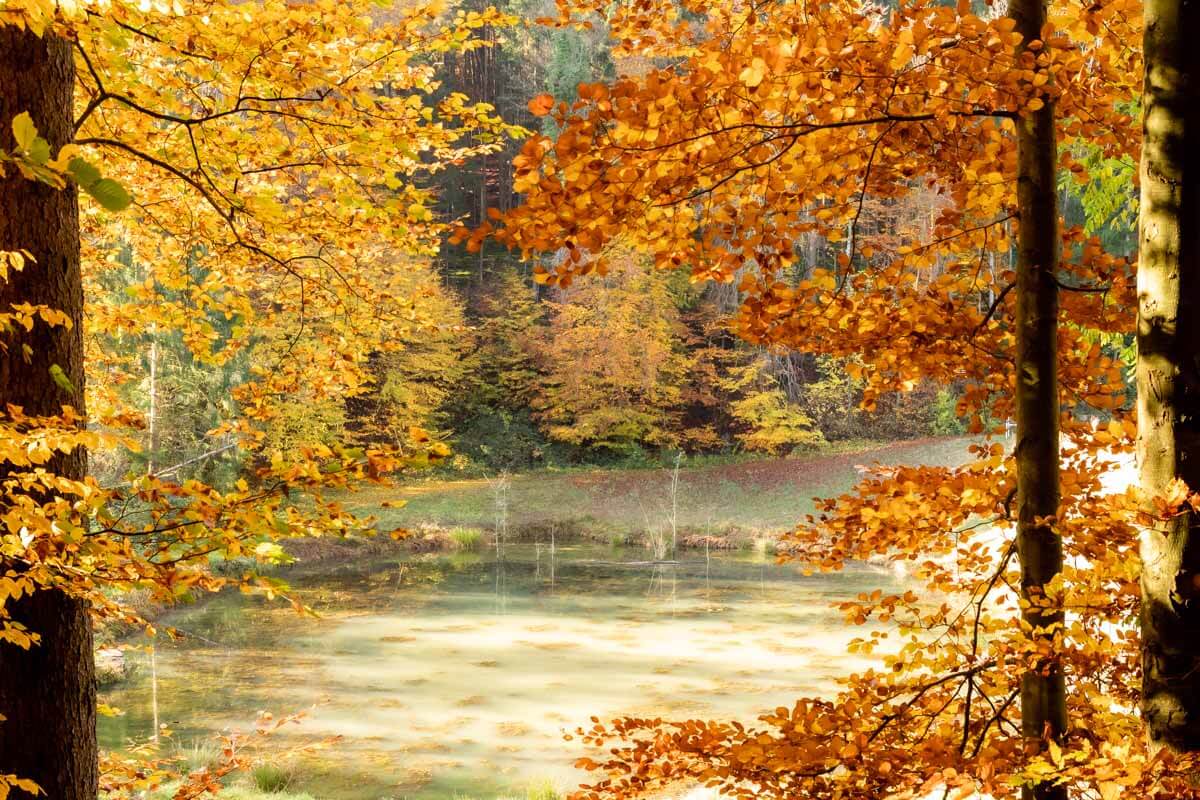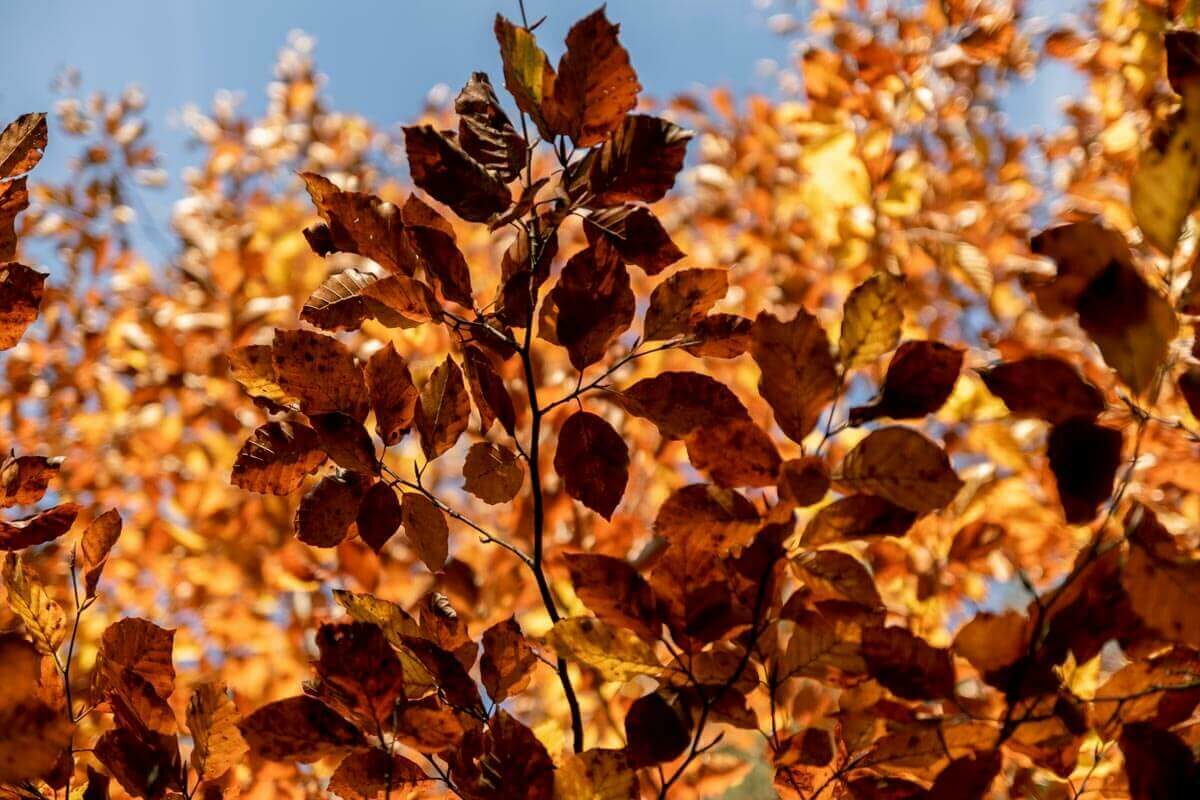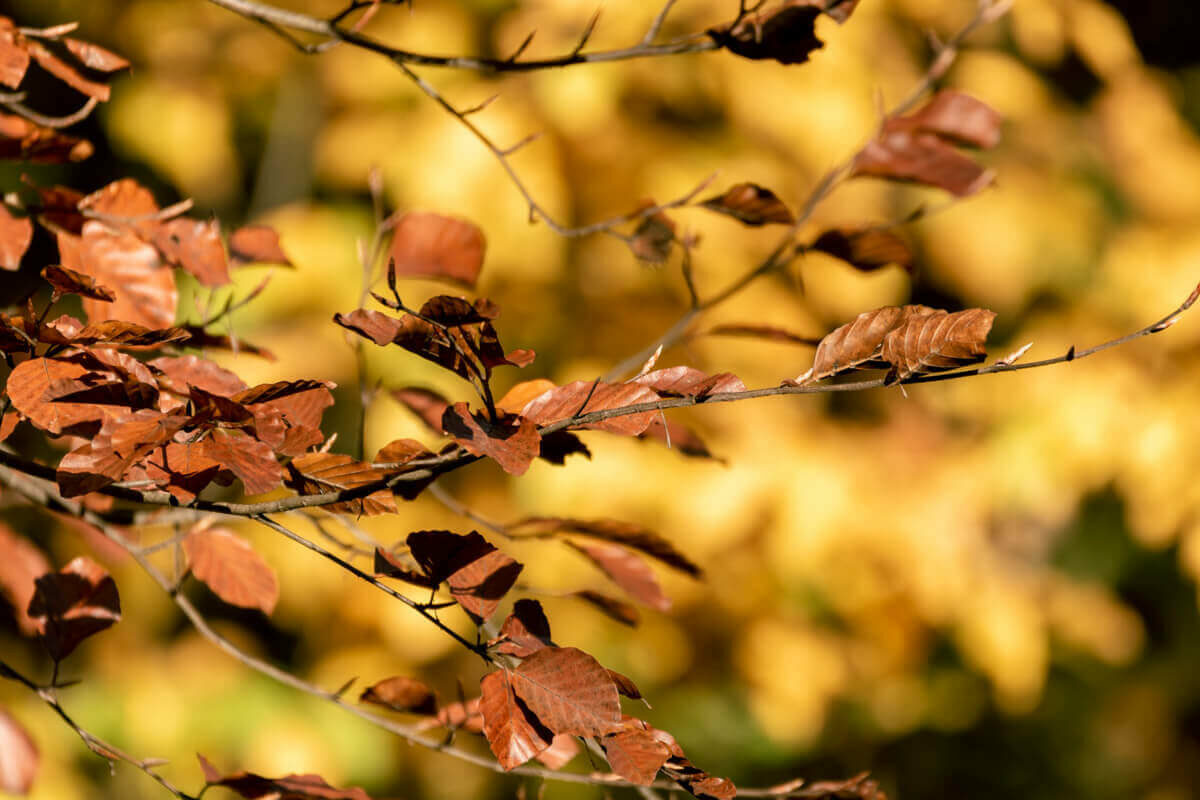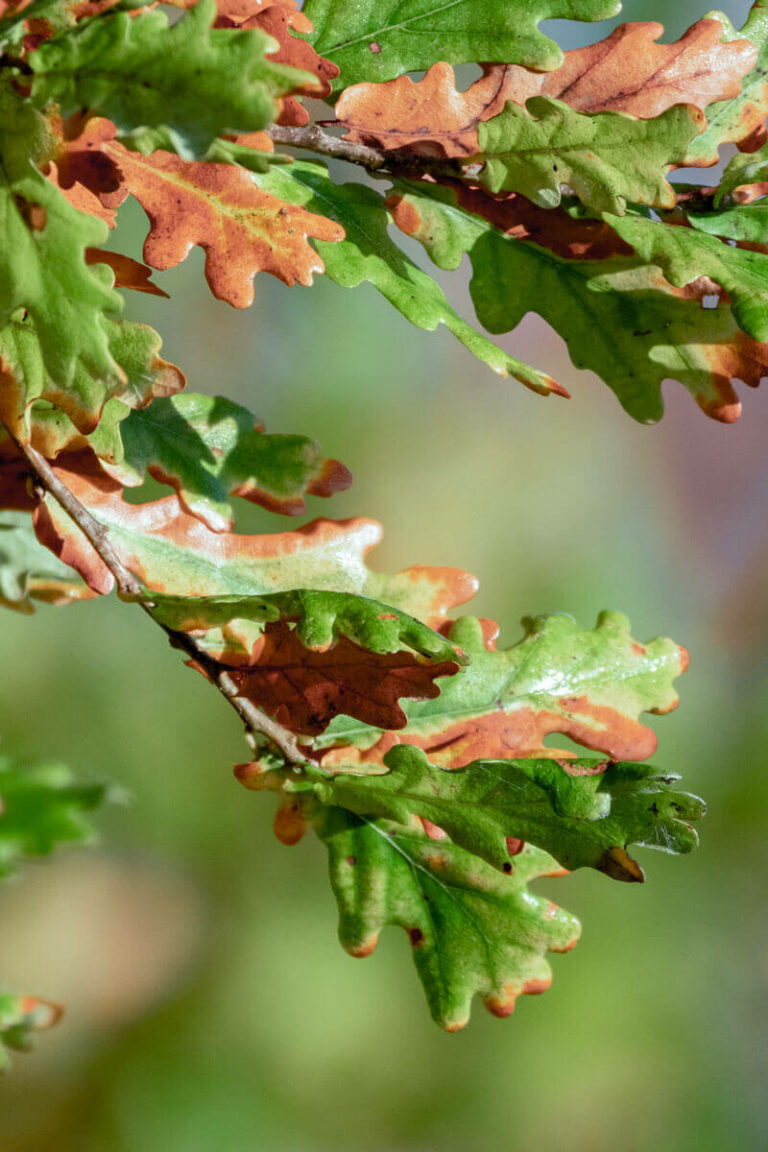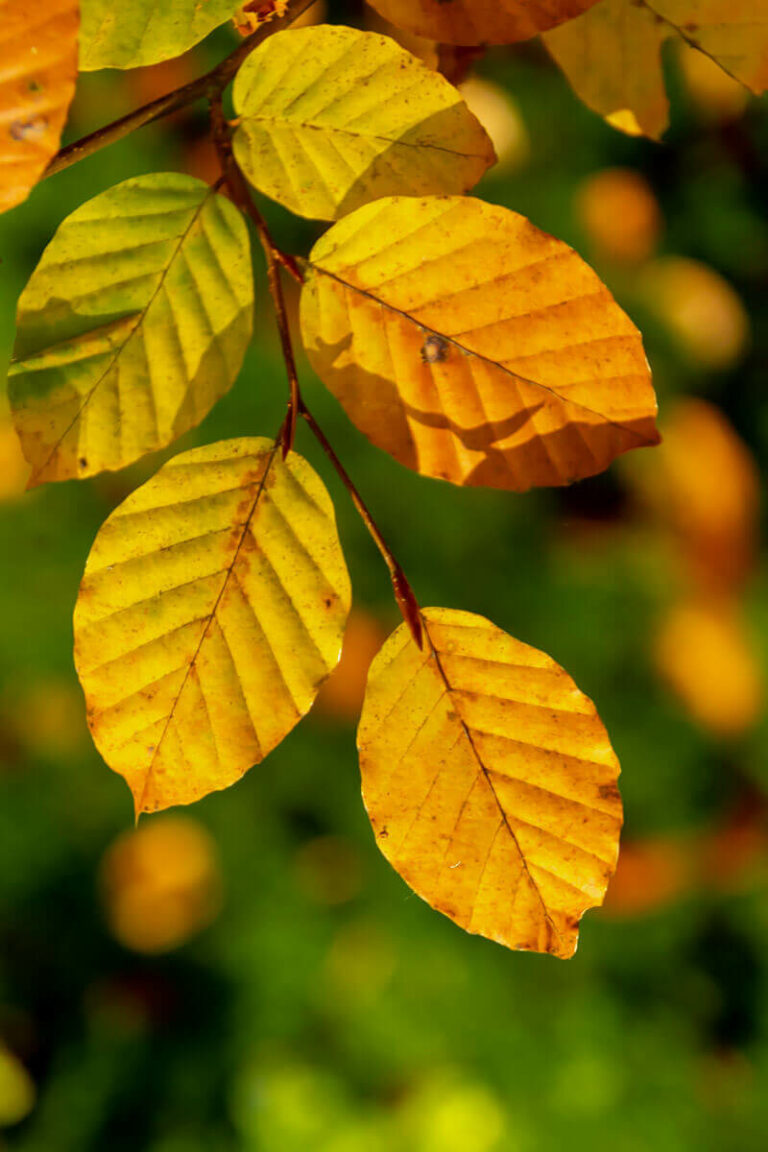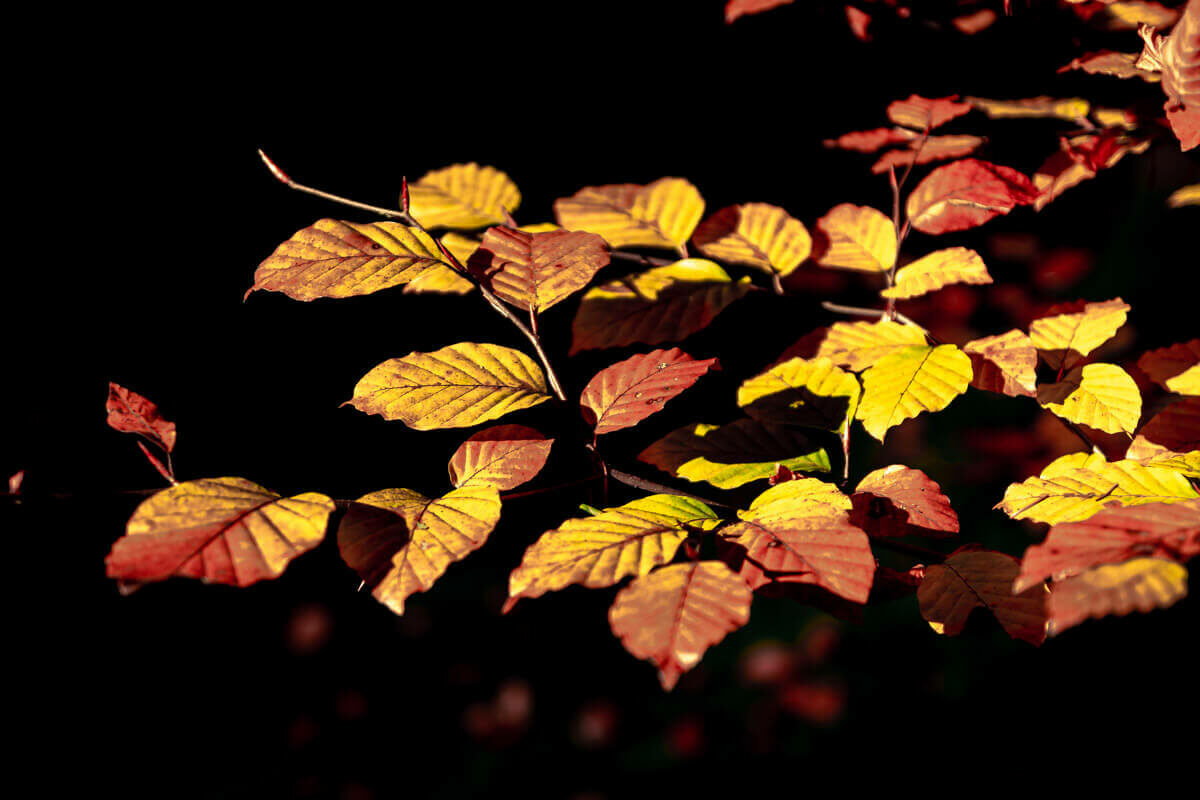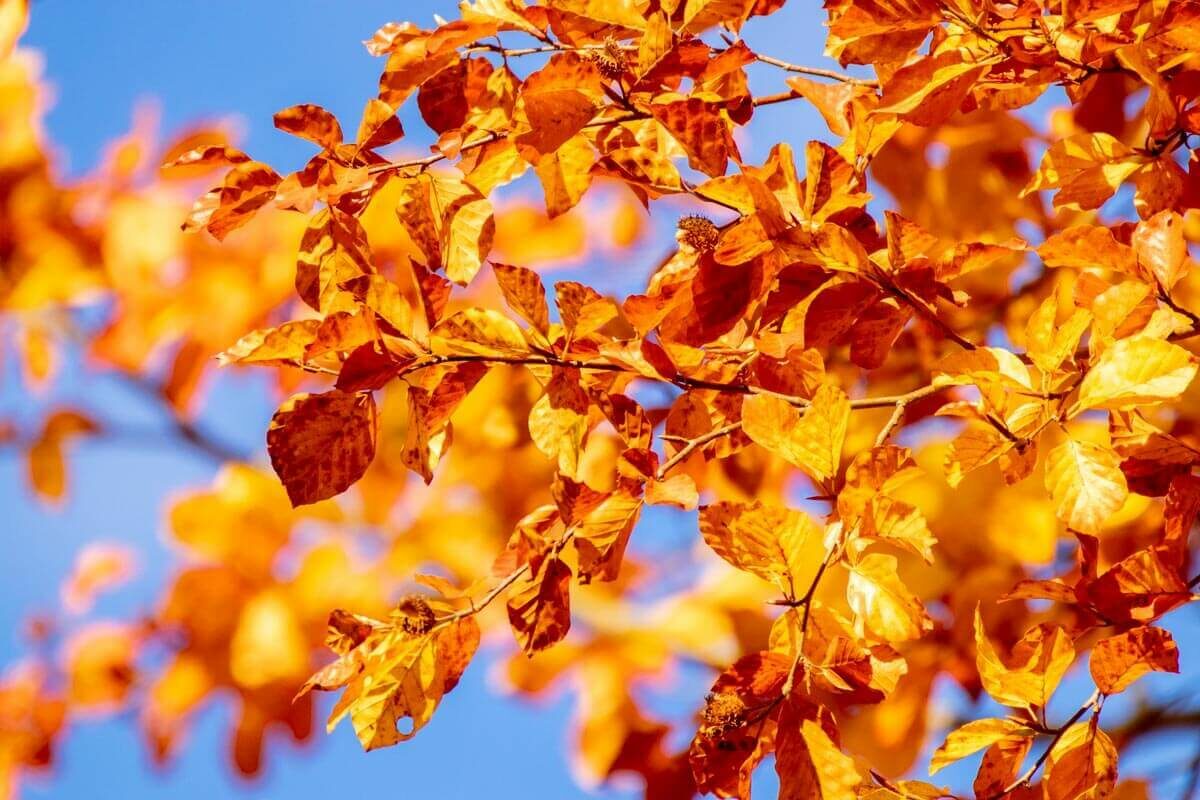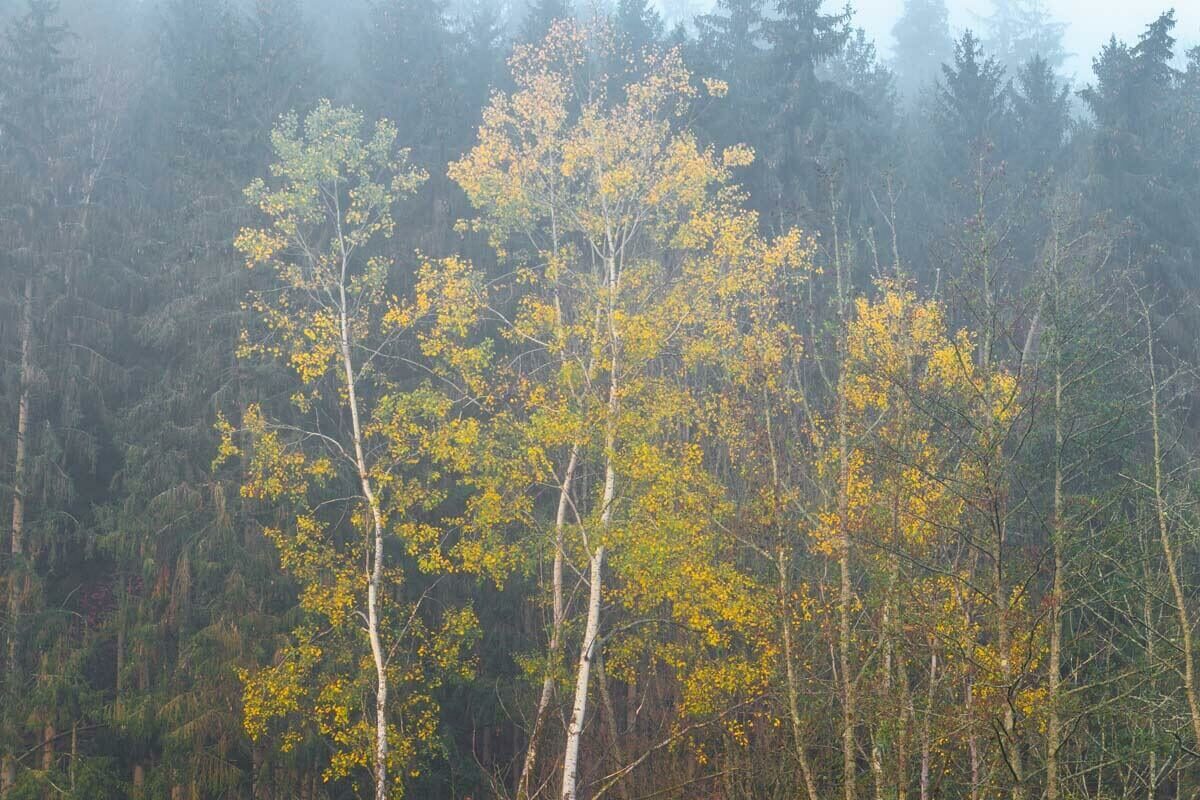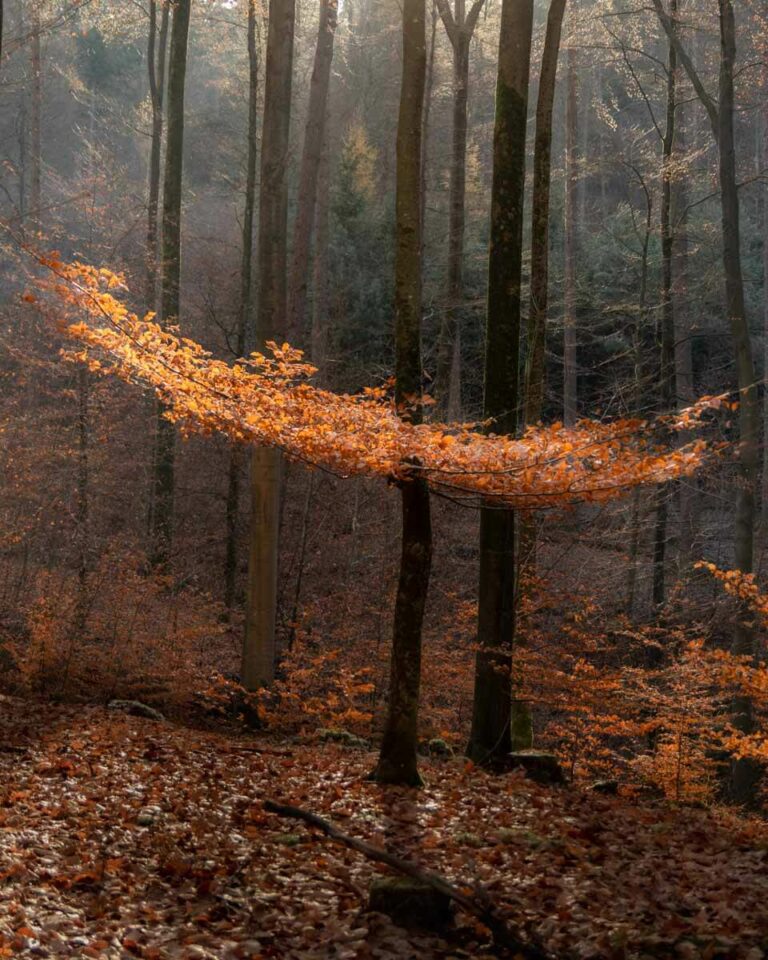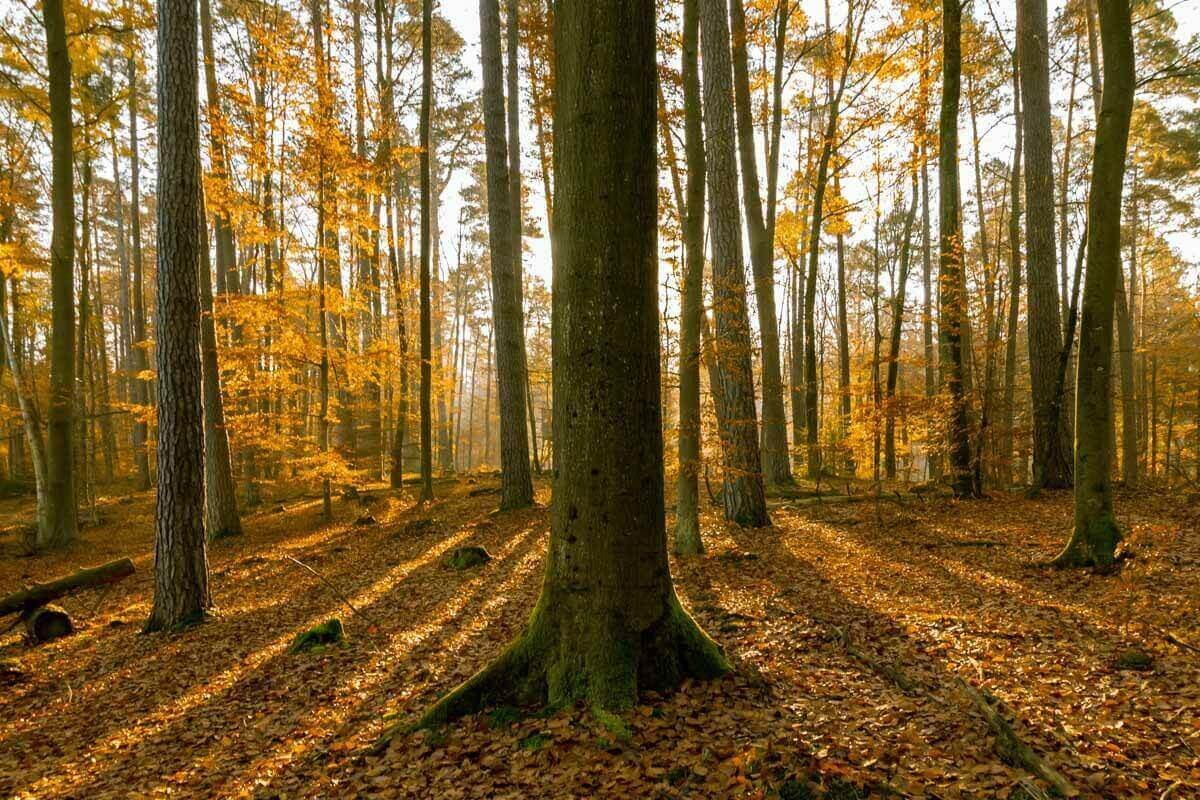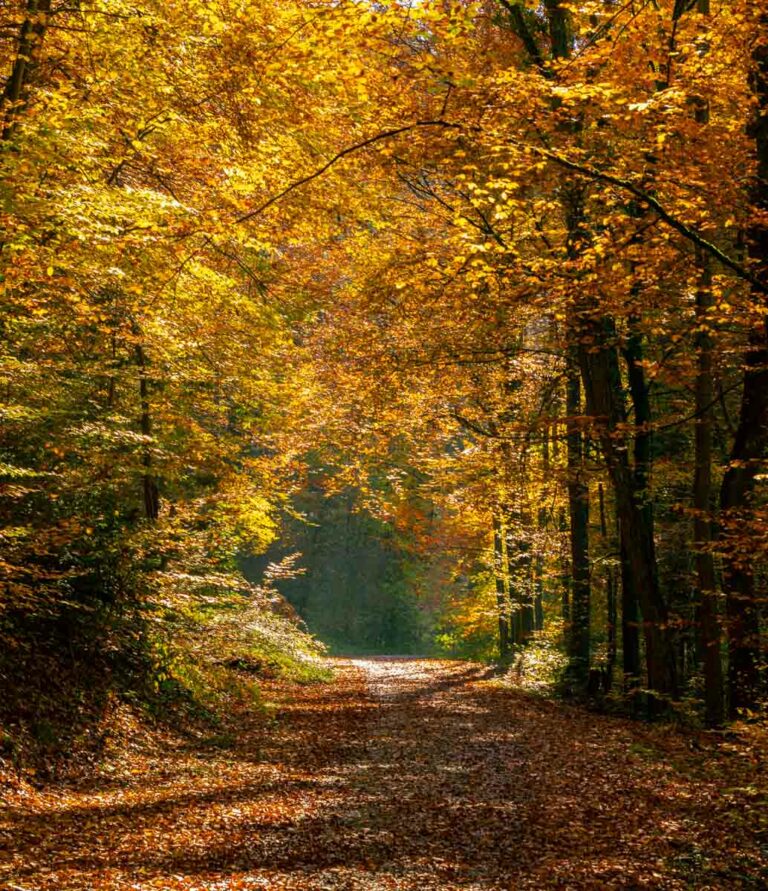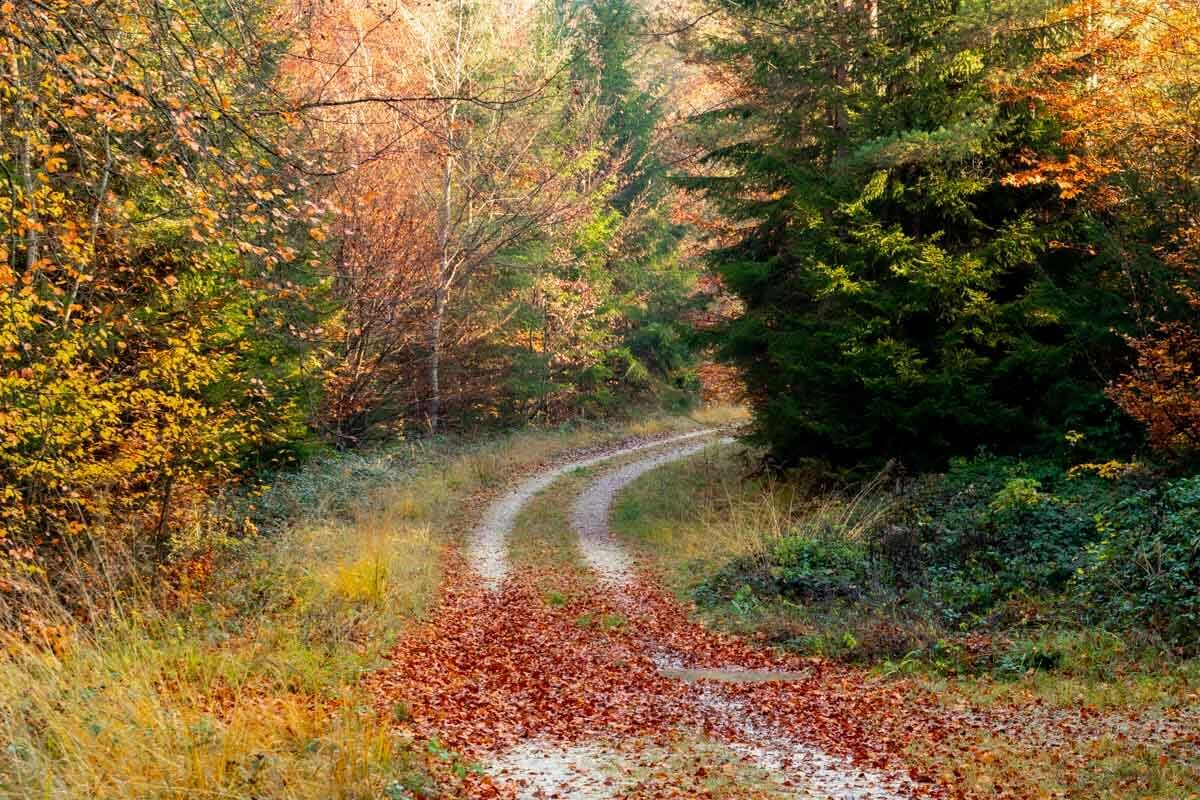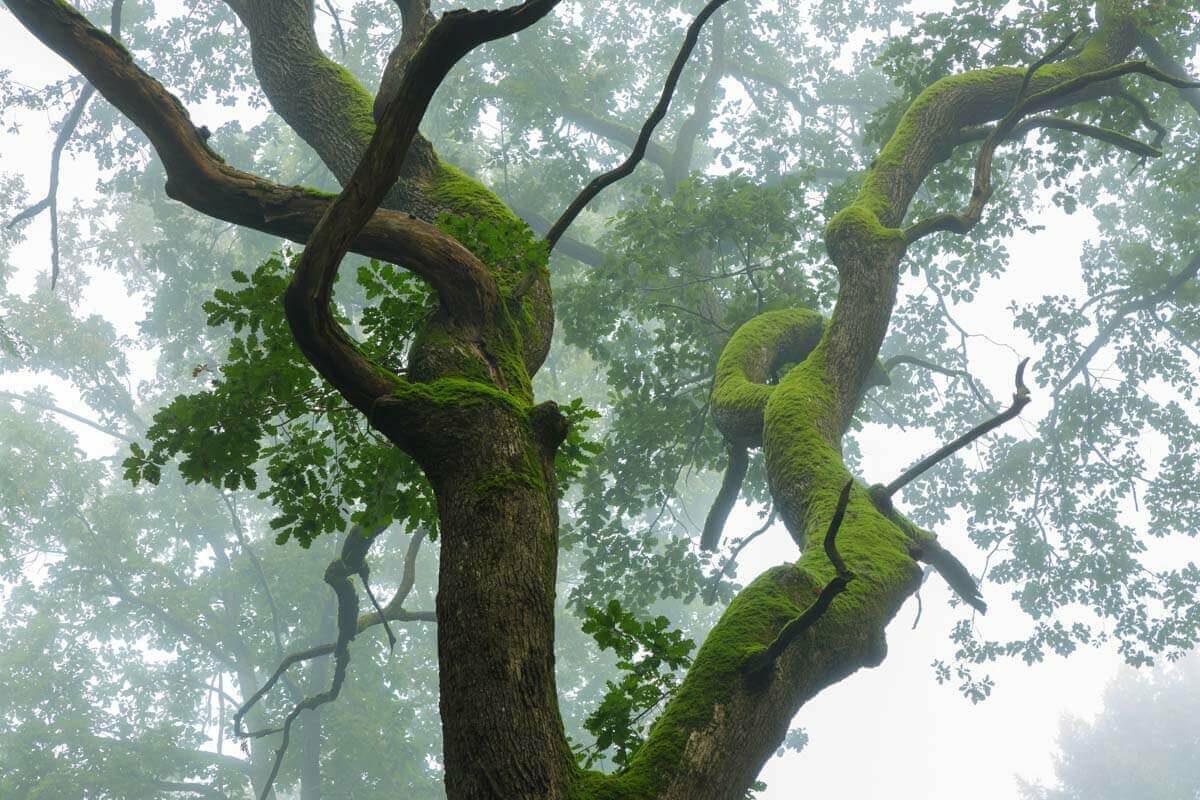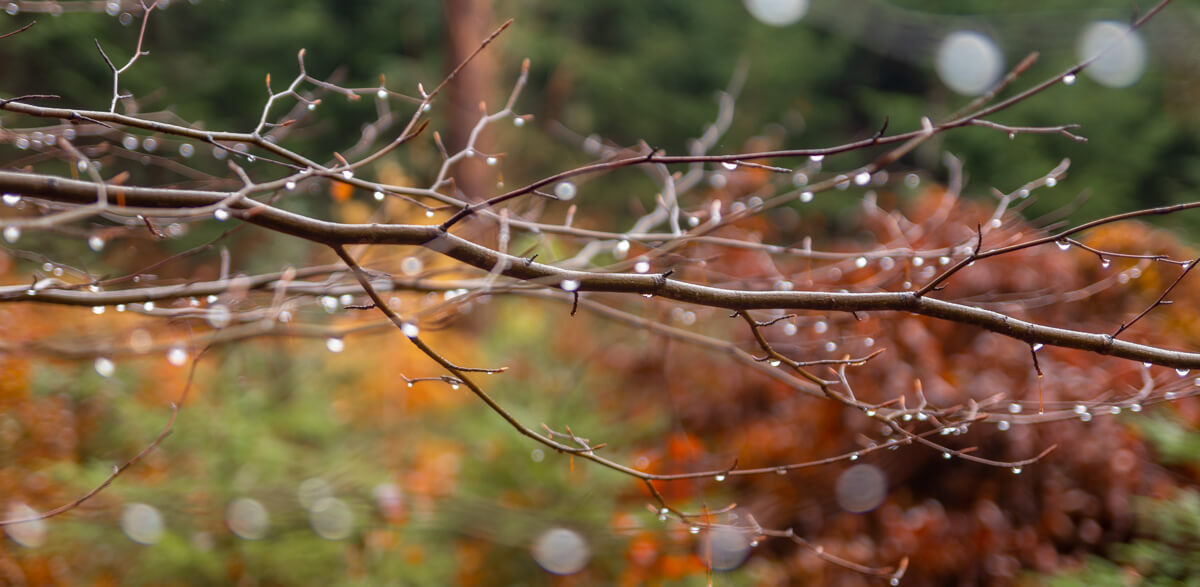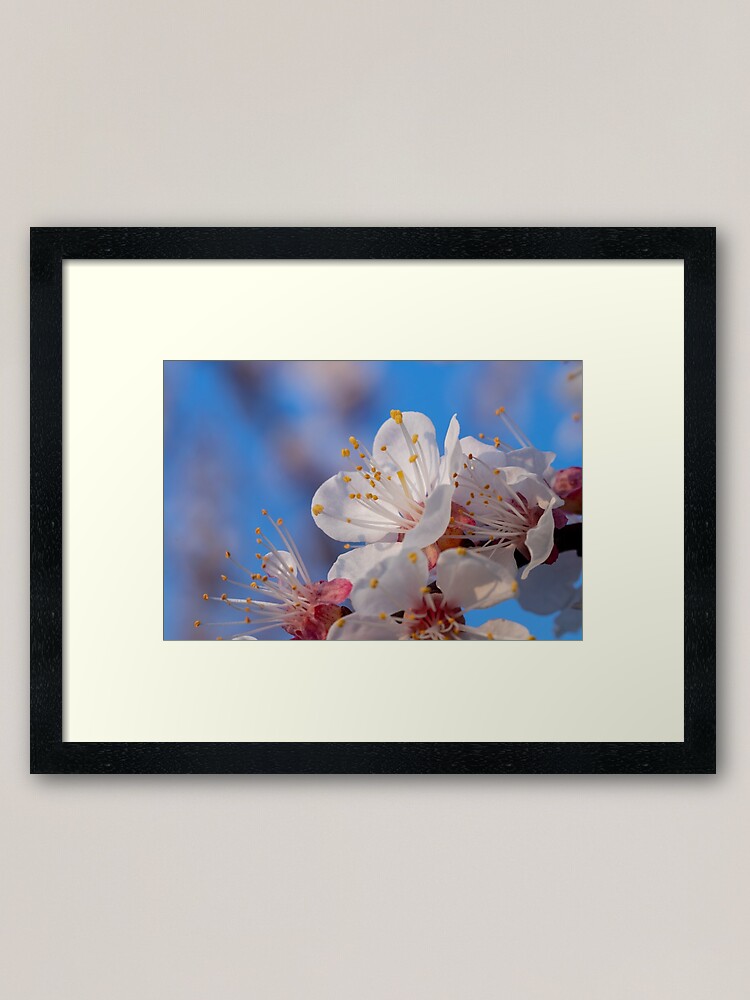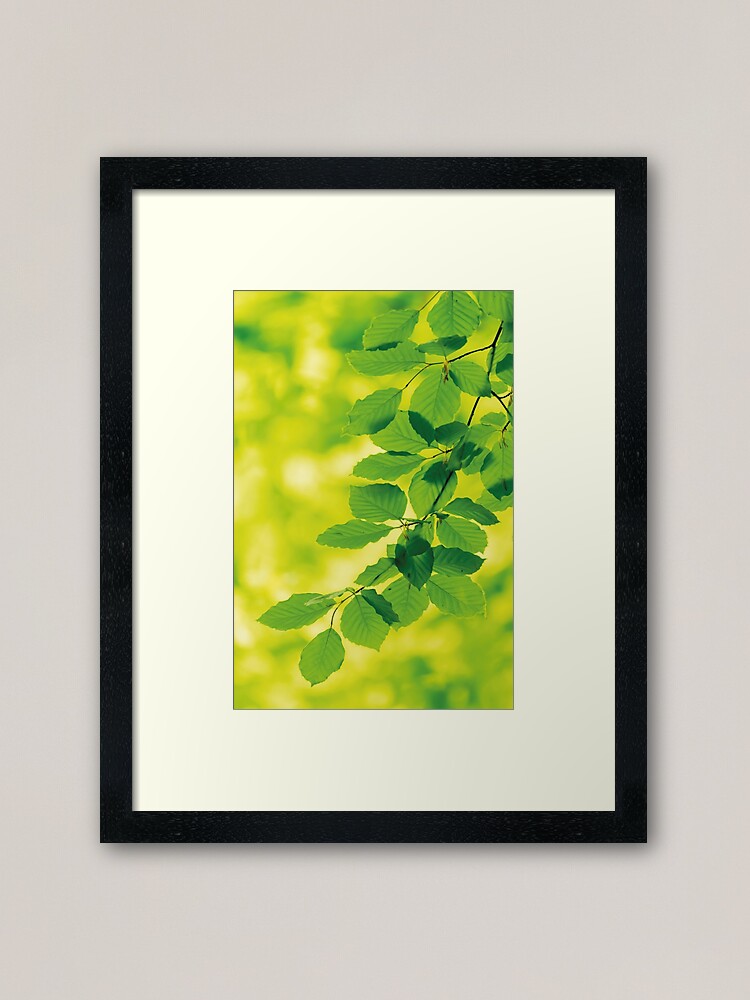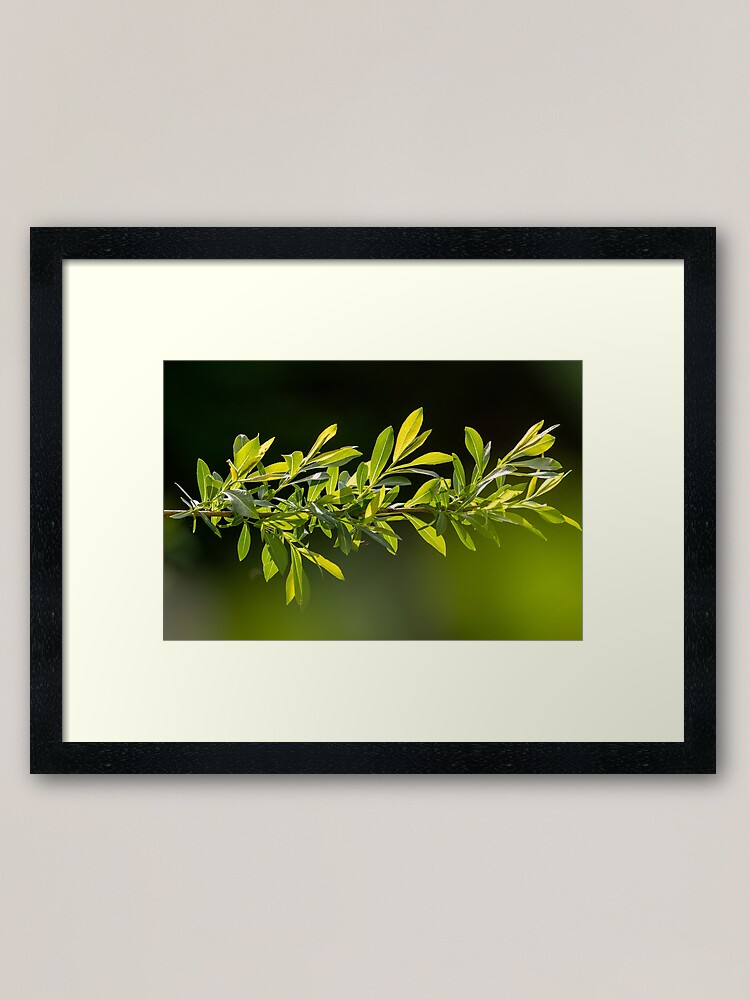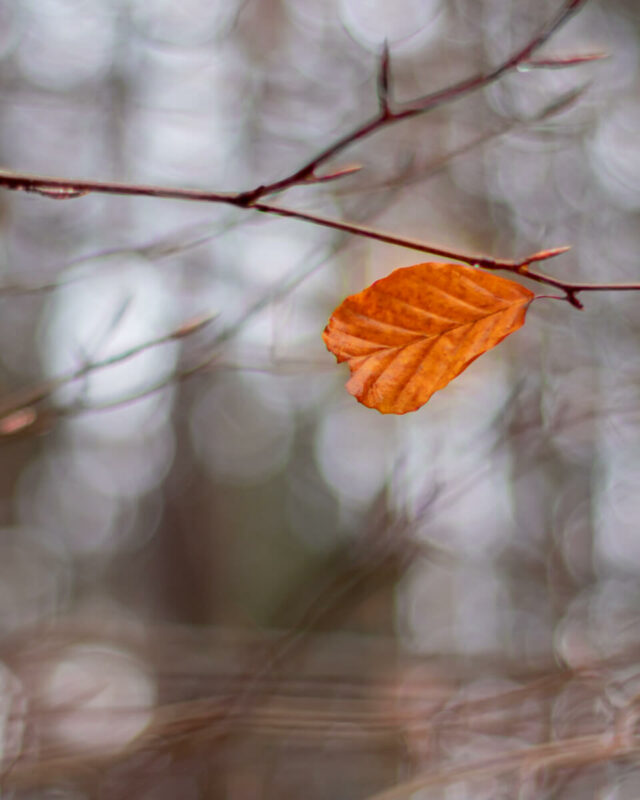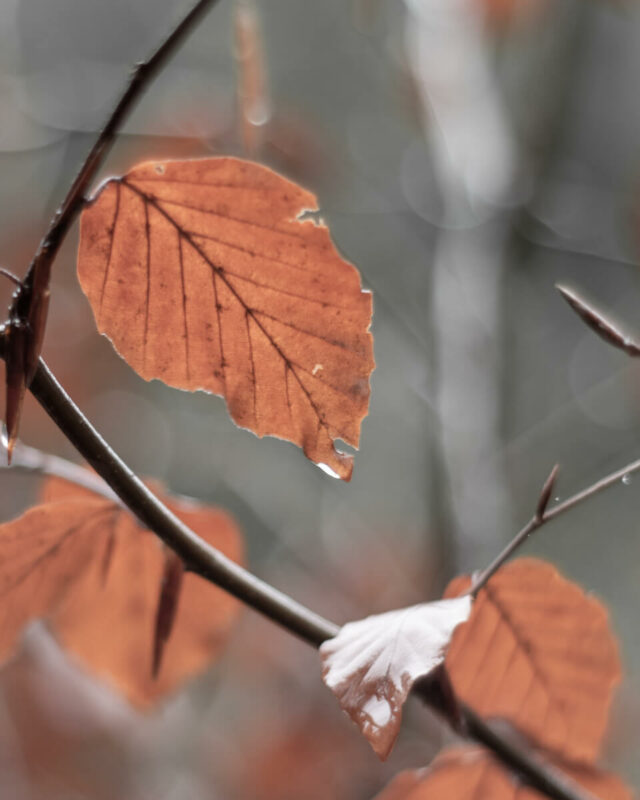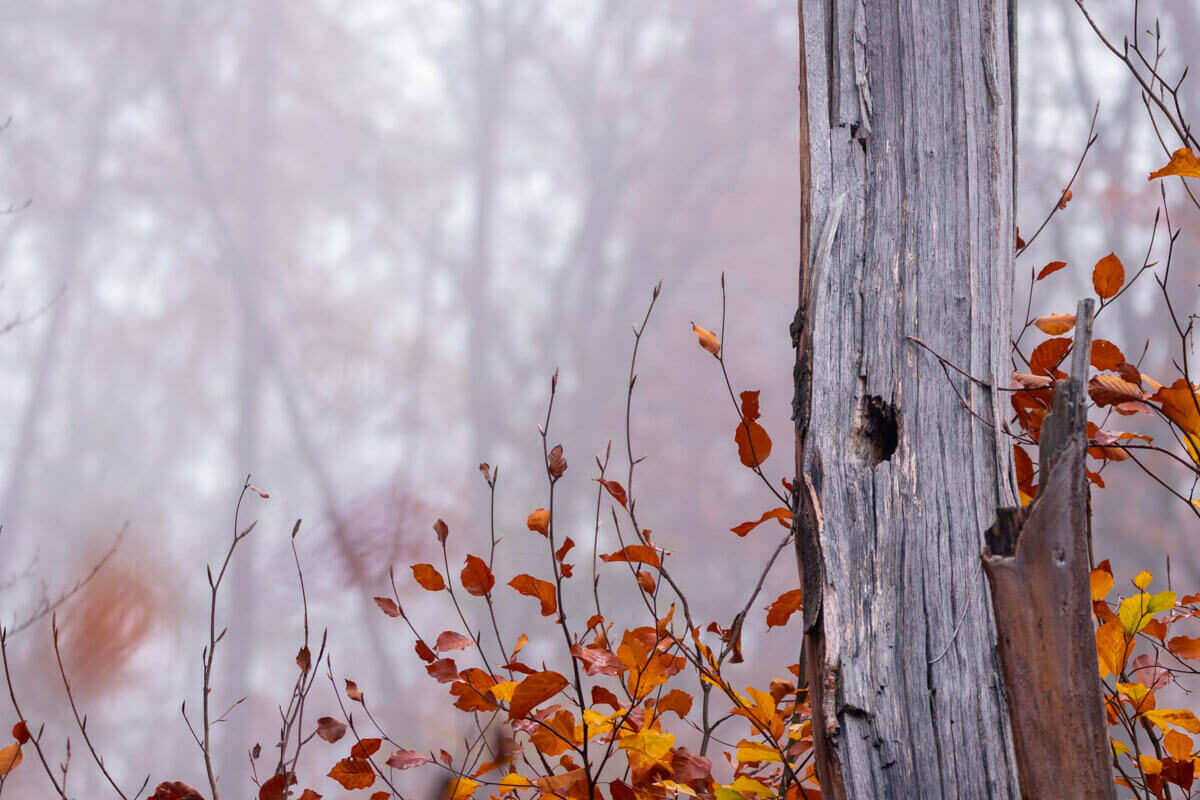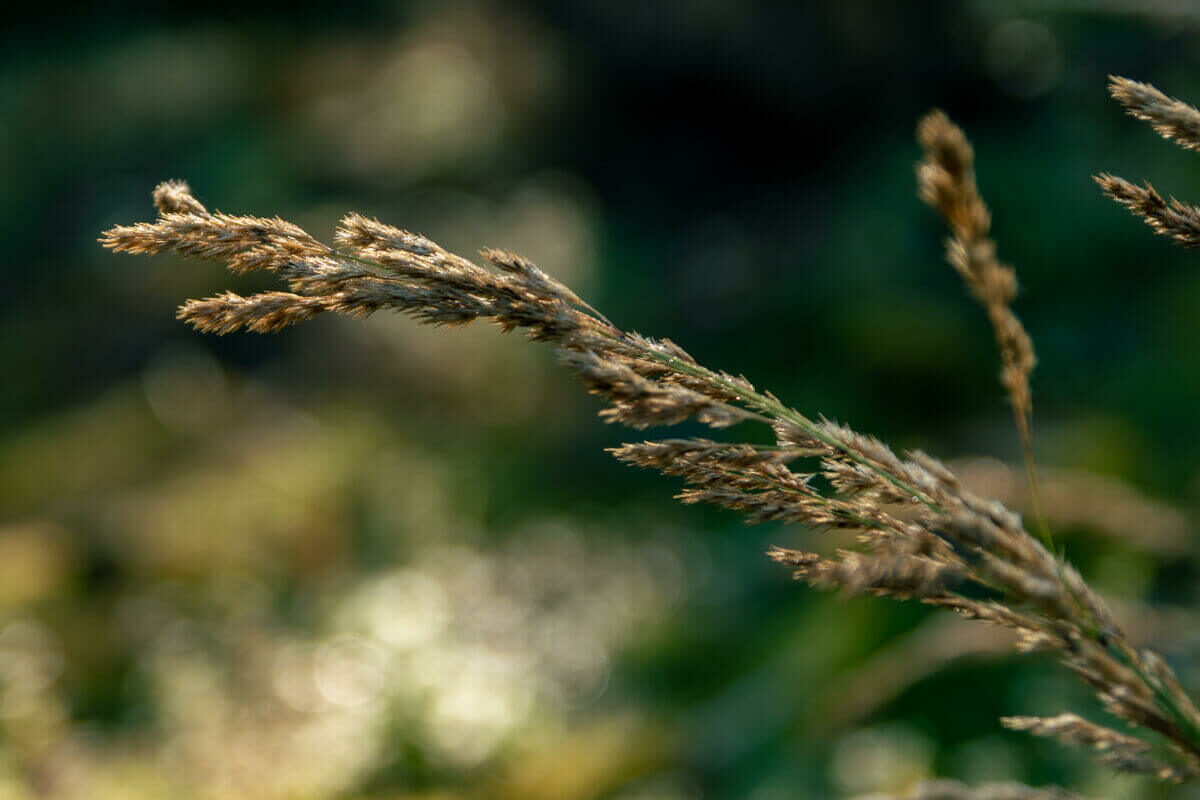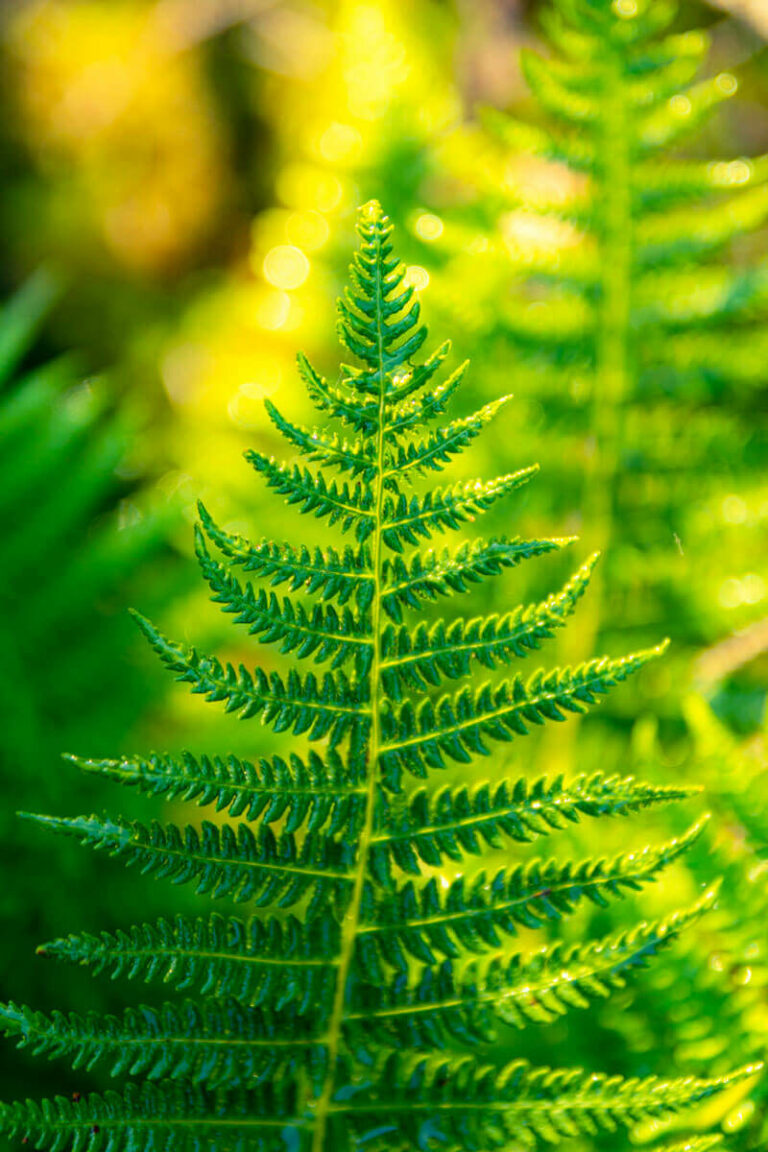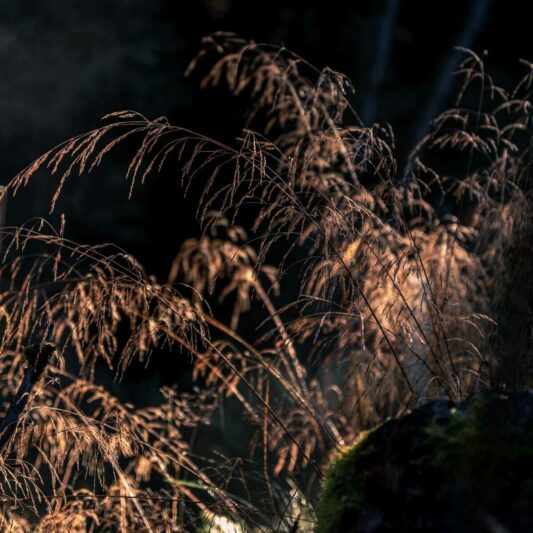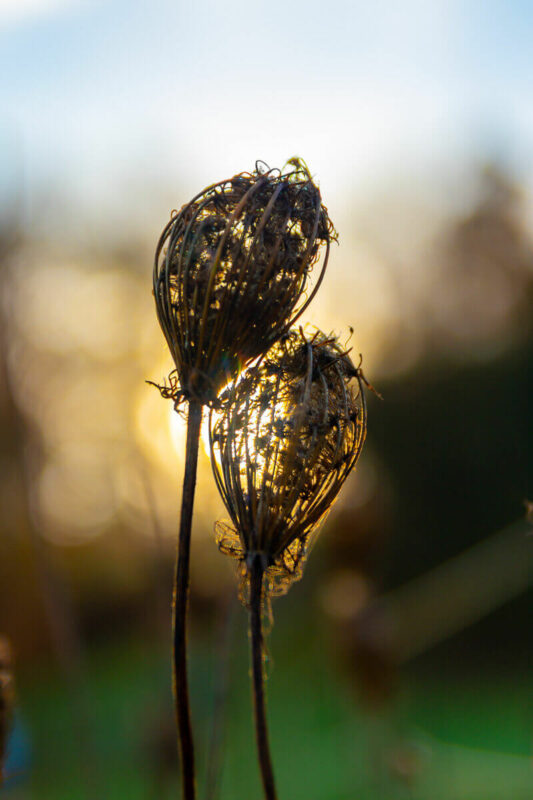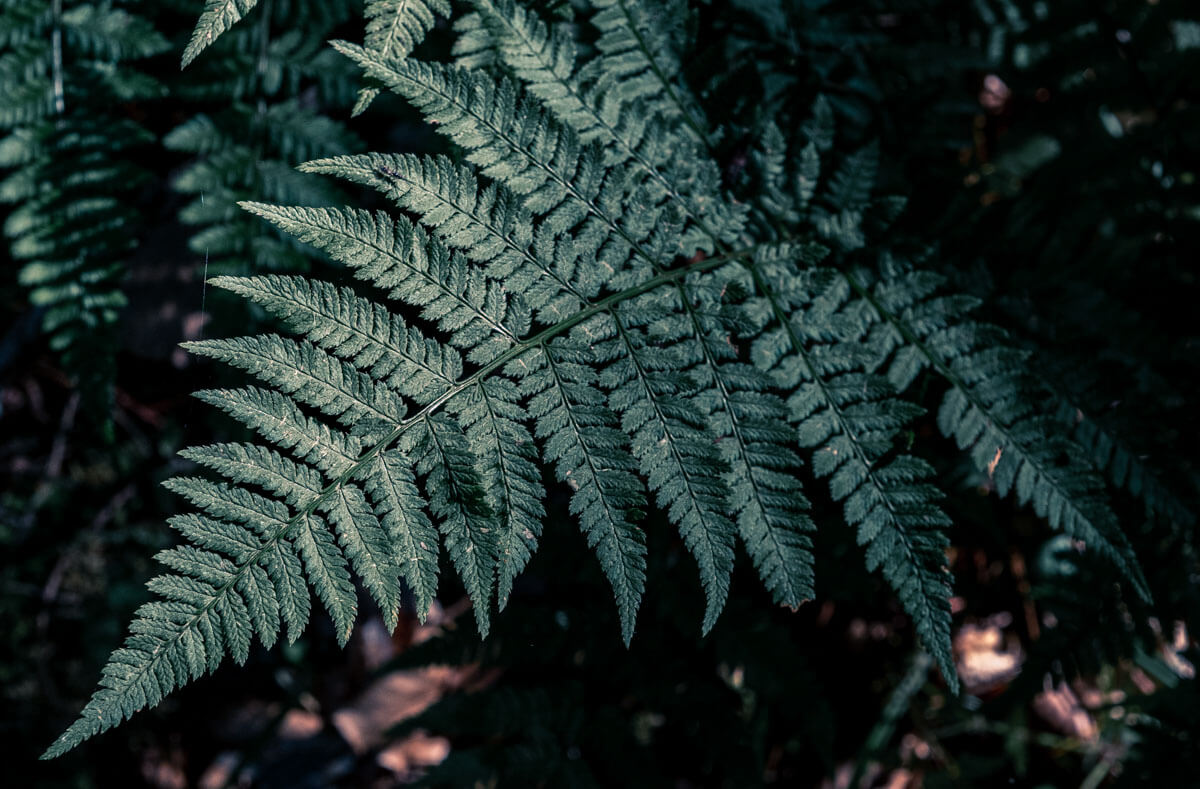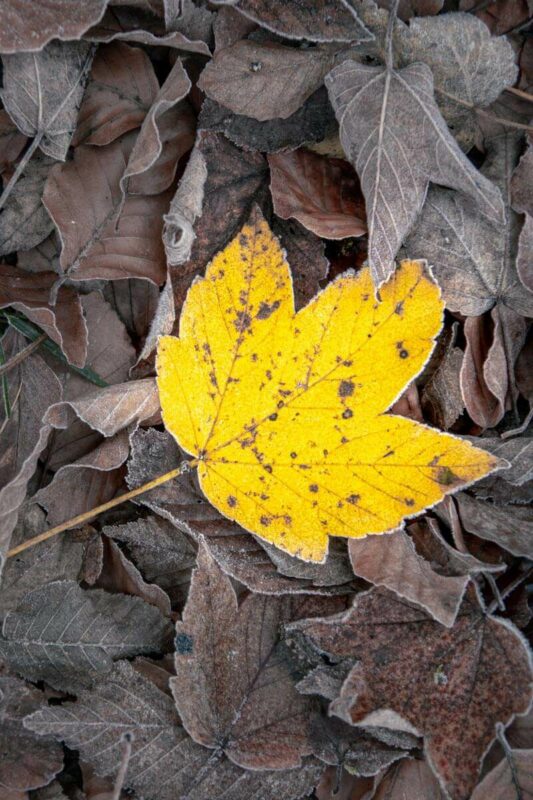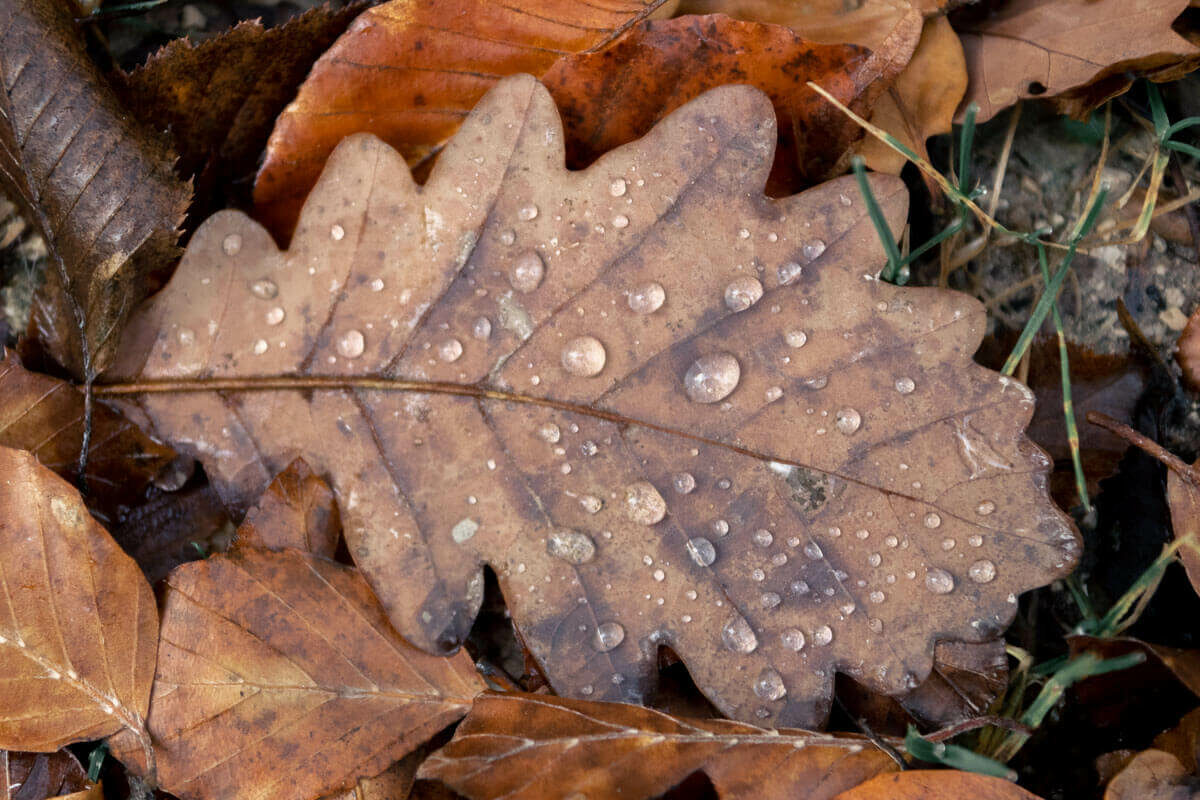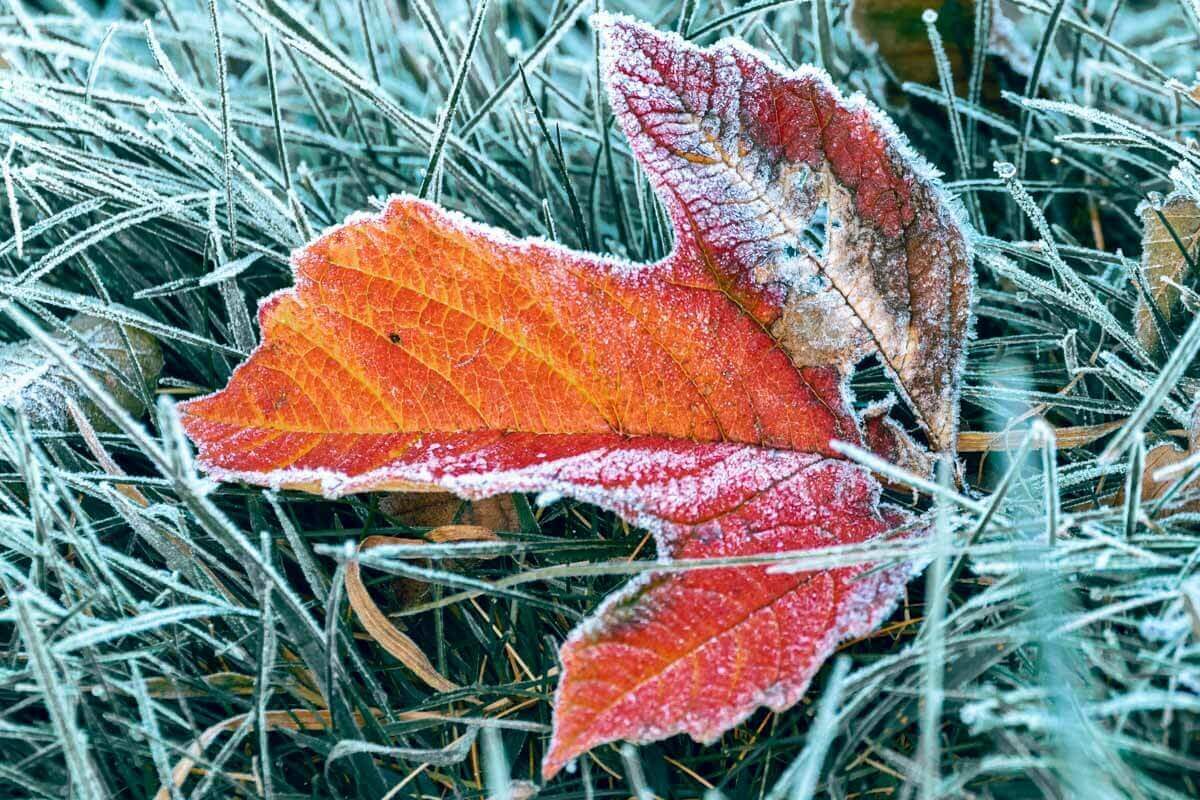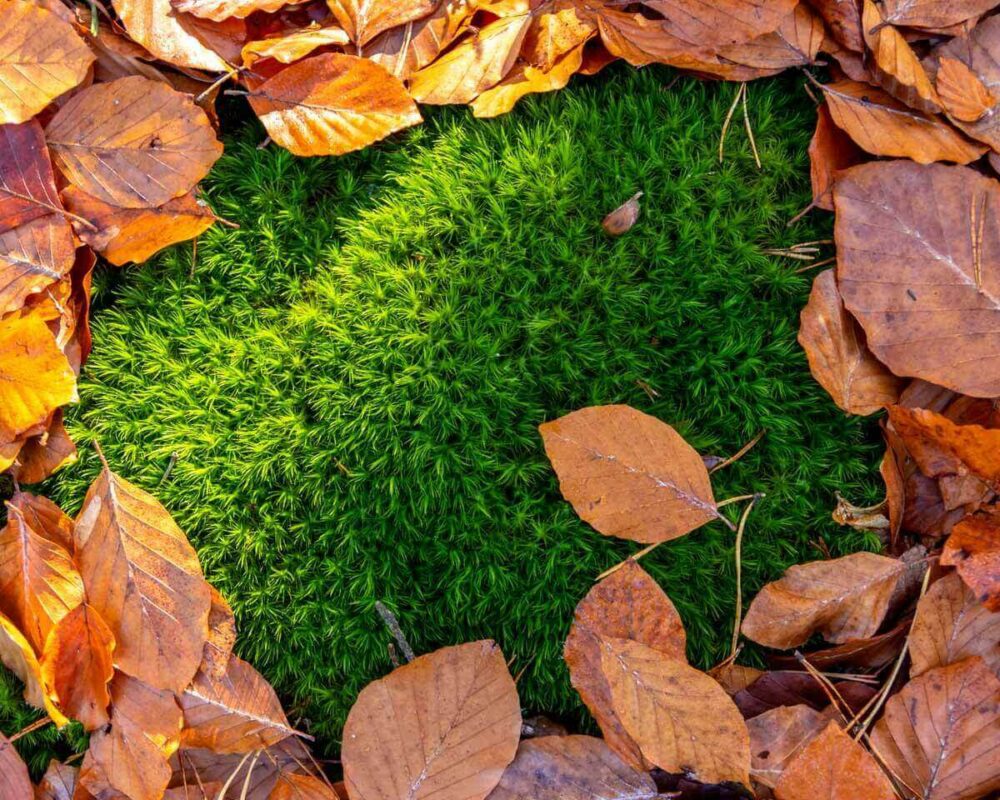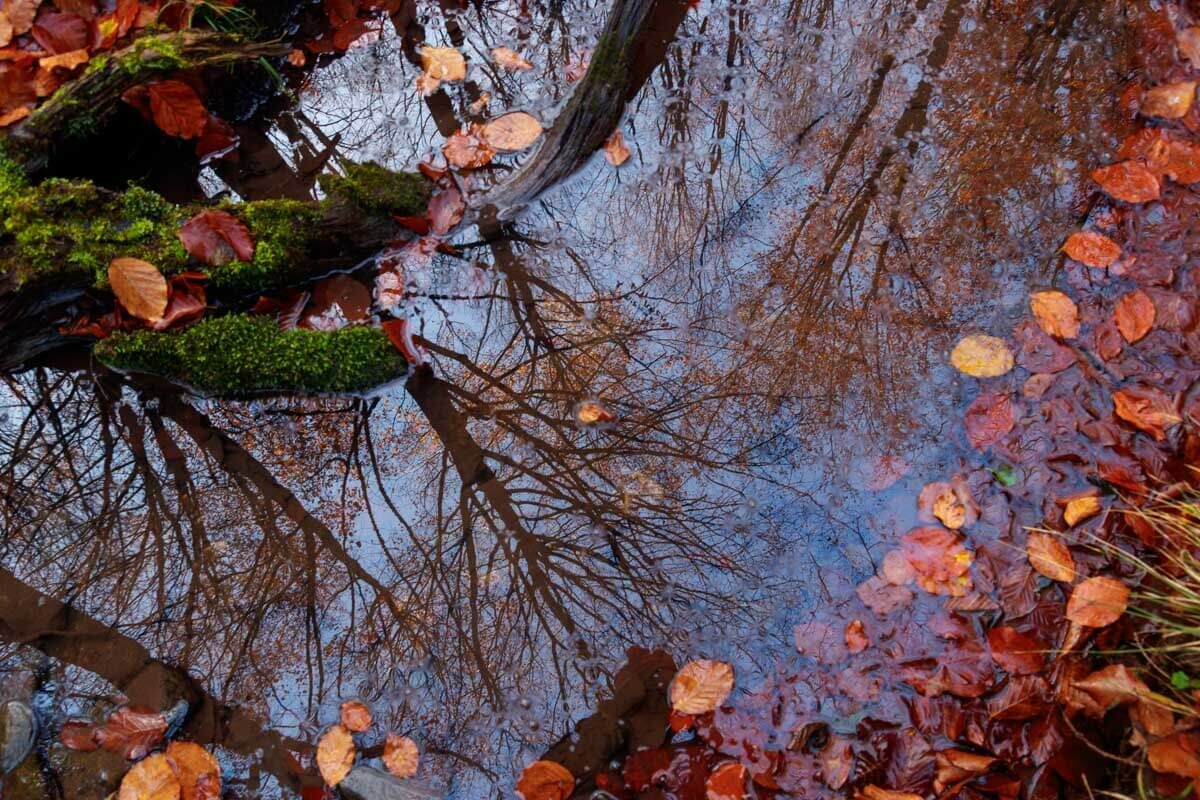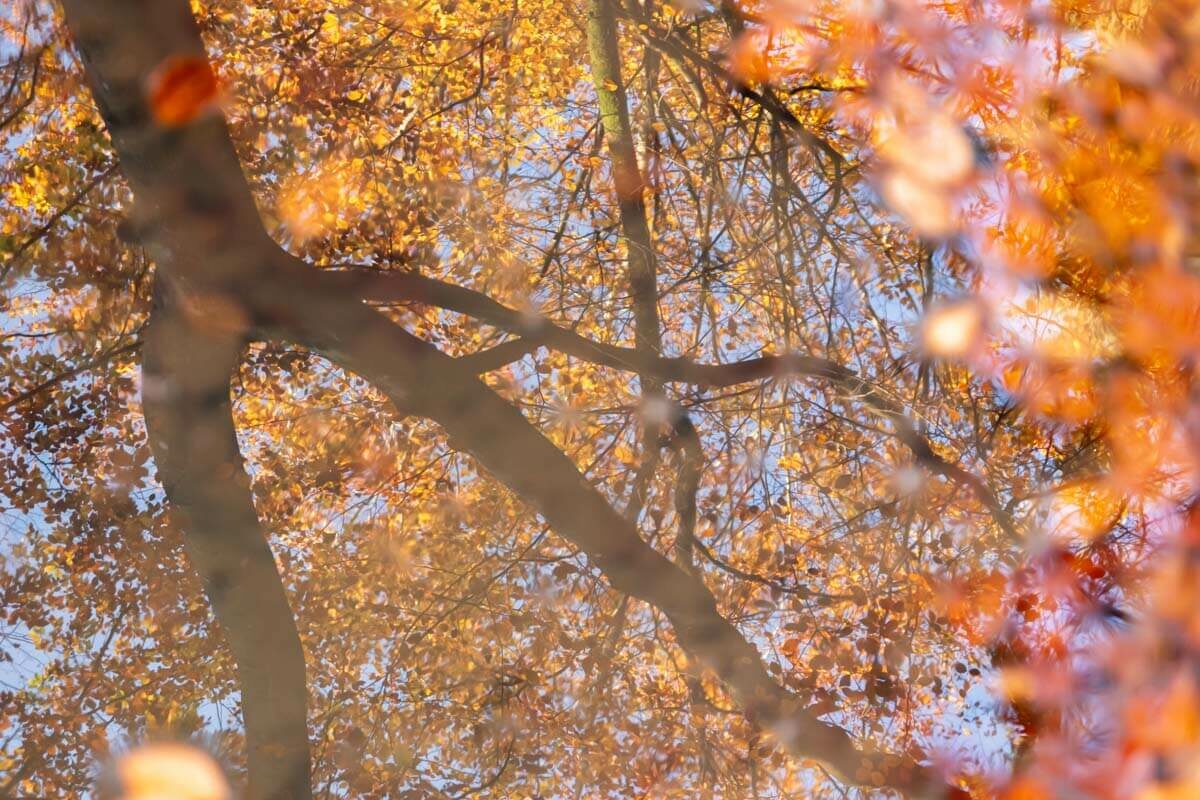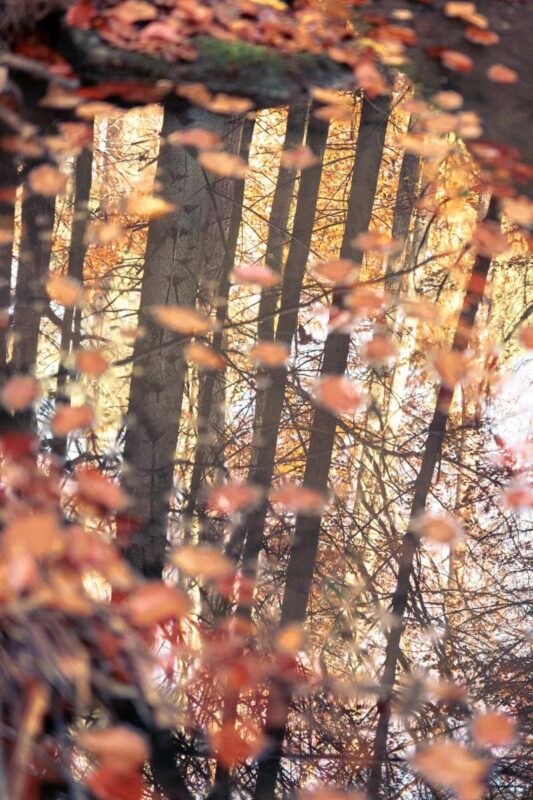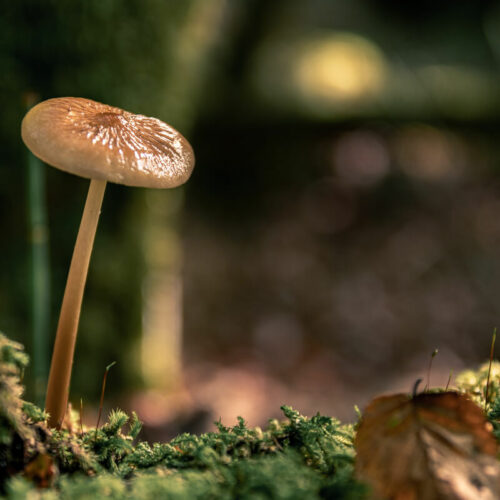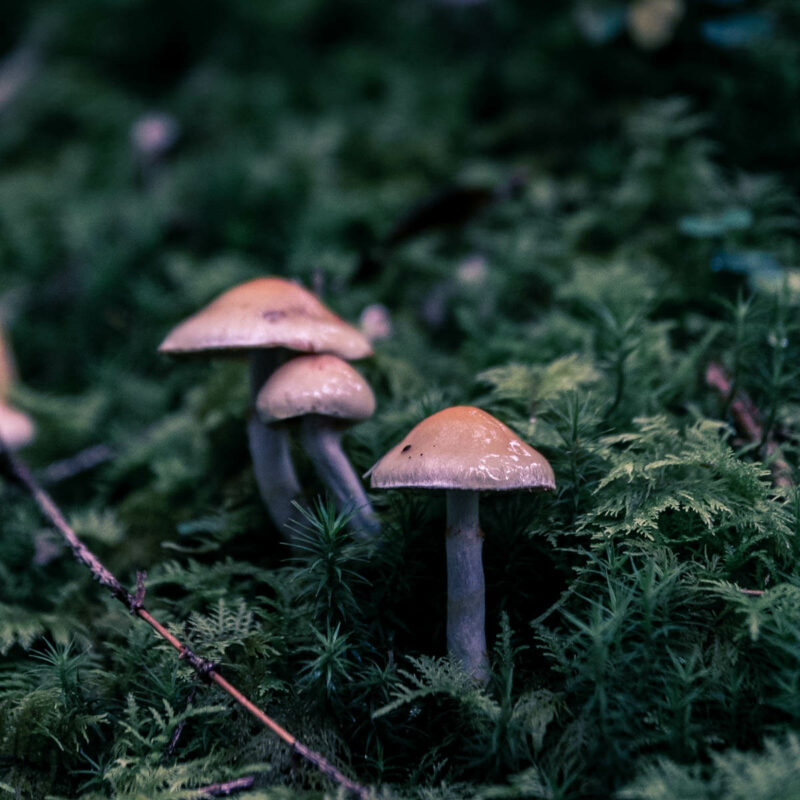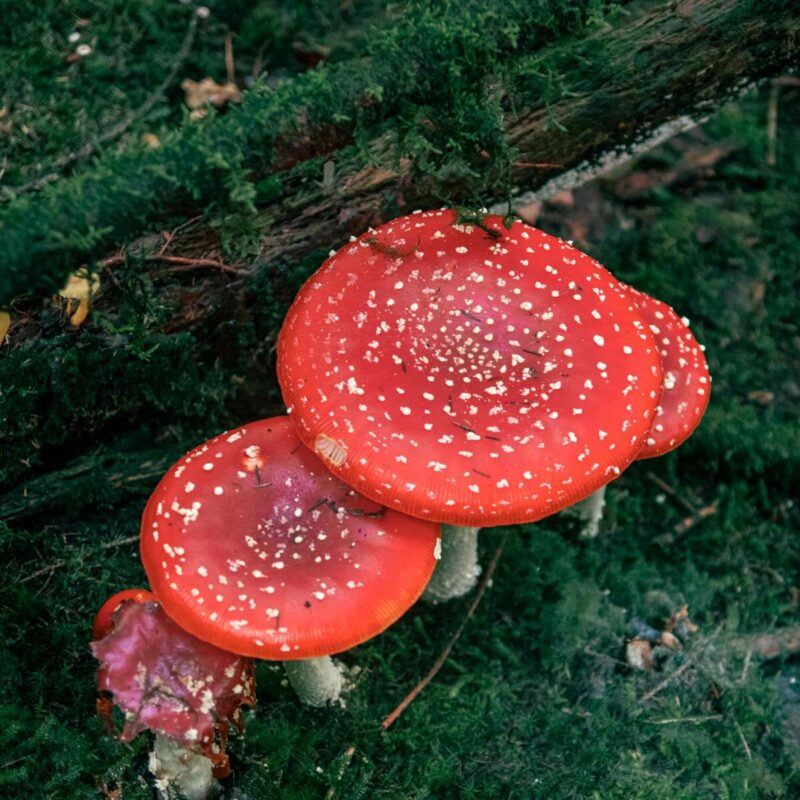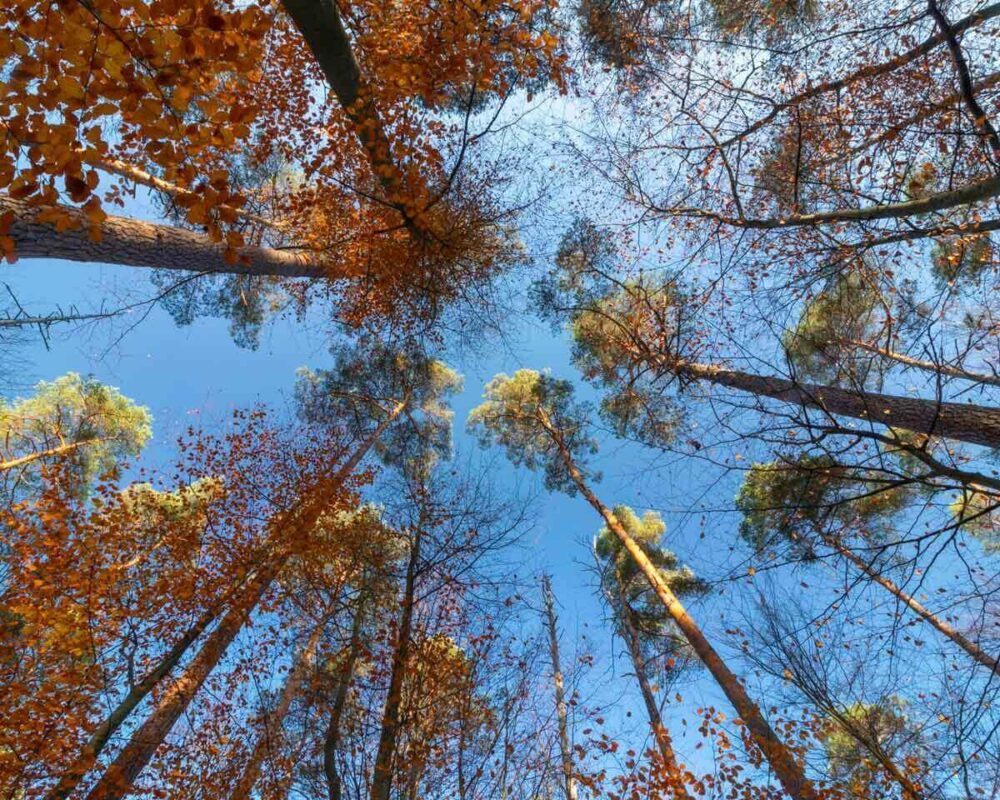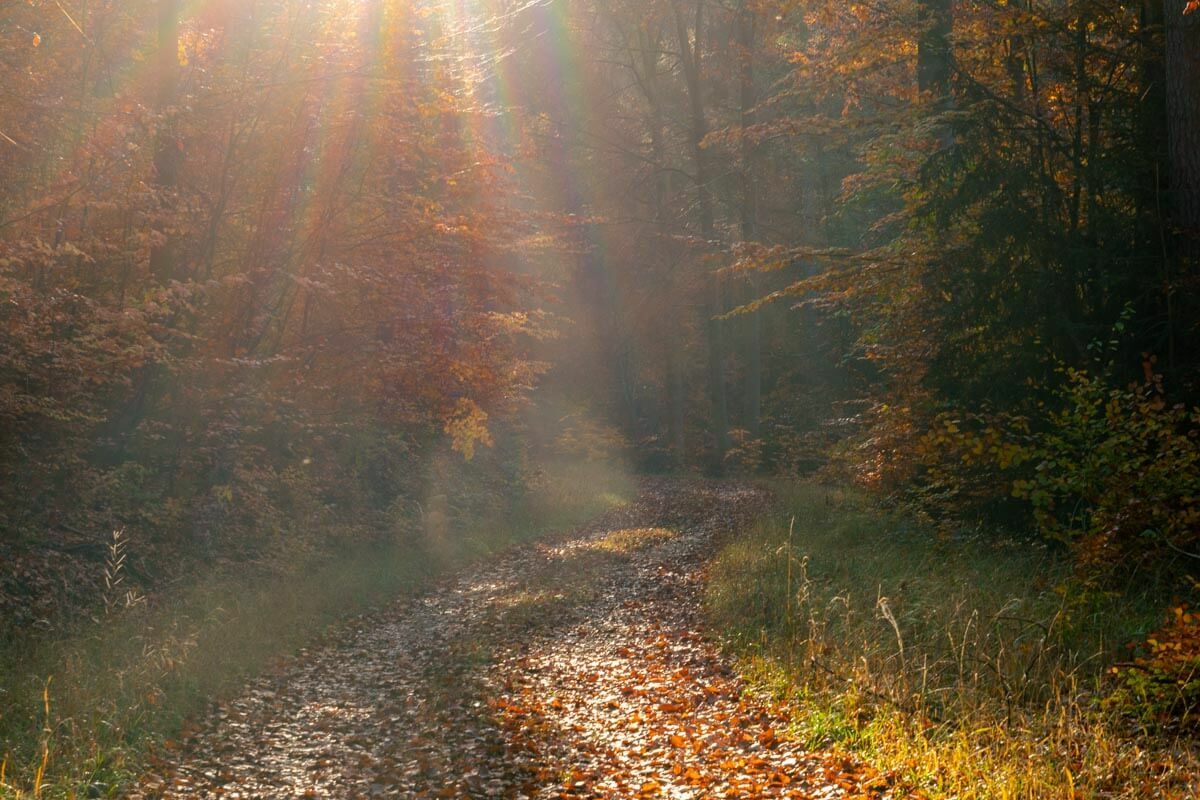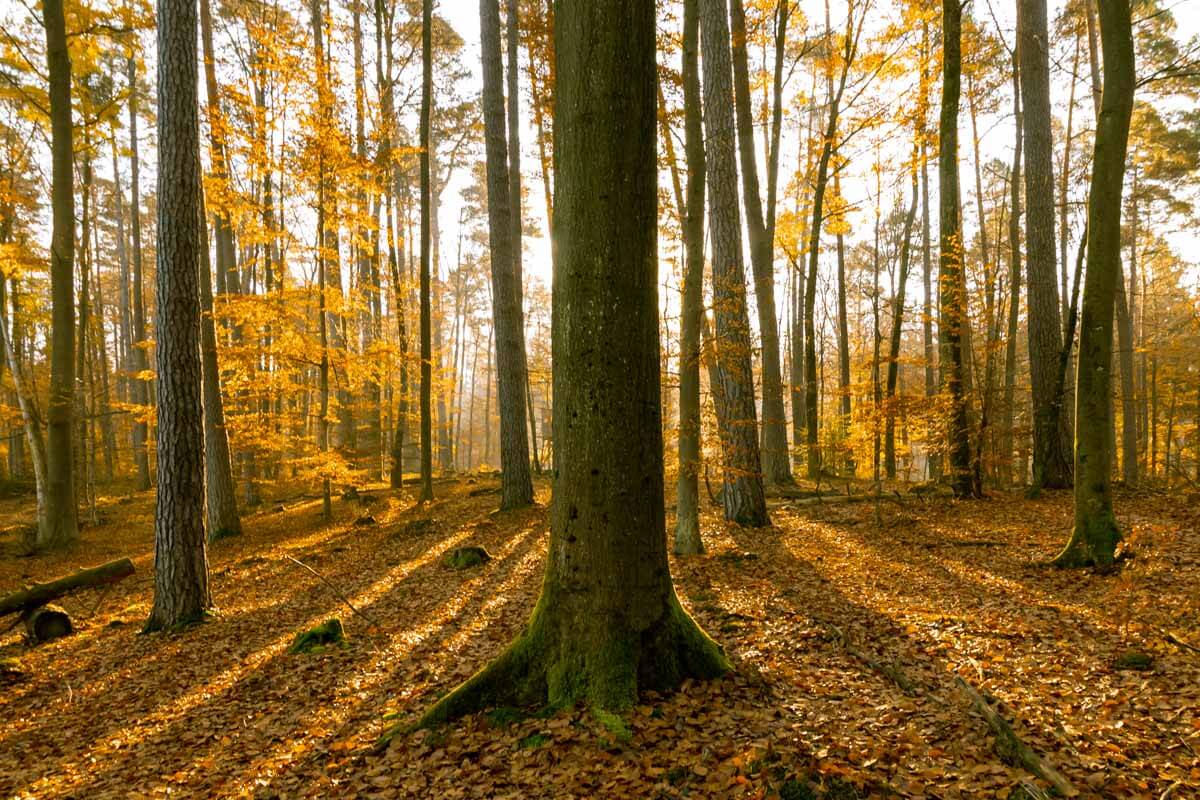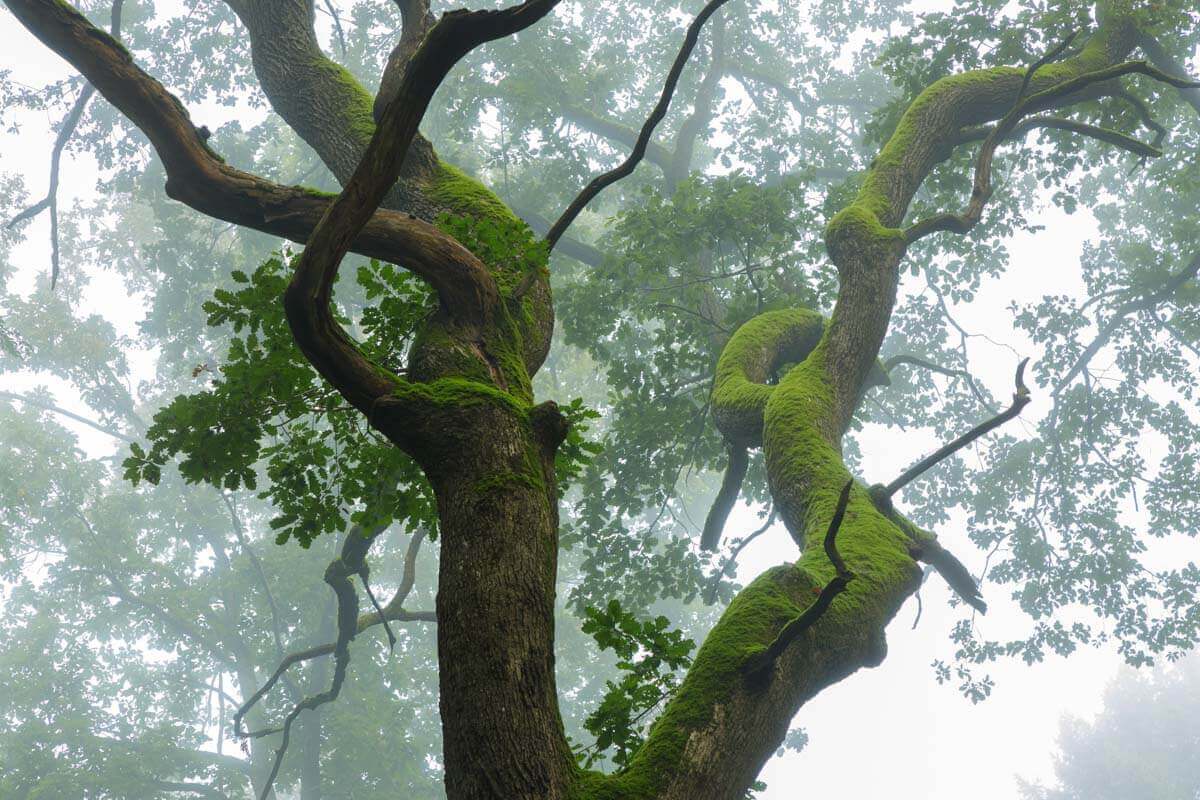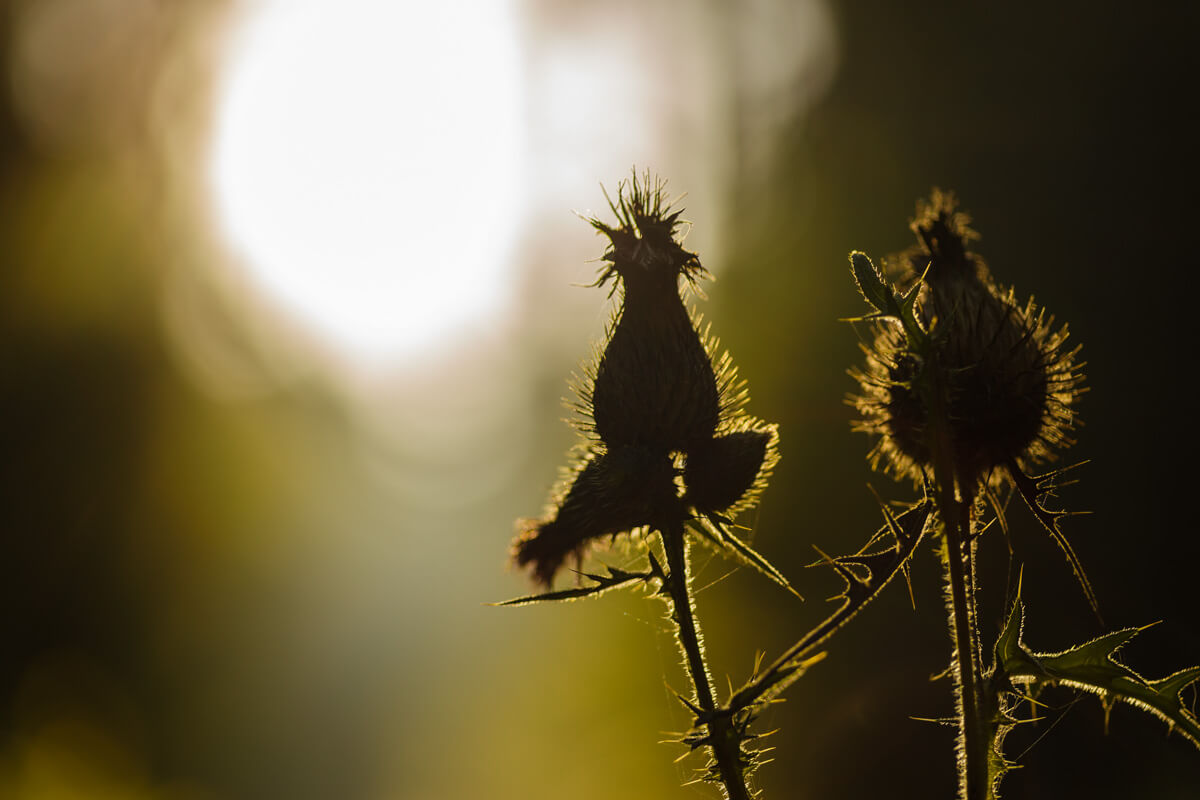The biggest photography mistake you can make in woodland photography
Sunday, it is the middle of the night, 3a.m. I’m awake and feel like I could pull out trees. But it’s the middle of the night. There are still more than three hours until sunrise. So I lay down on the couch, read a bit in the internet and plan my photo tour. The weather forecast says, it is going to be foggy. I’ve been waiting for fog forever! Finally, I fall asleep again, until at 5:30 the alarm clock wakes me rudely from a weird dream.
Your trust is extremely important to me: This article contains referral links (affiliate links). If you buy a product through one of the links, I will receive a small commission. You will not incur any additional costs and you support this blog. Thank you very much! Your Tanja
One look out of the window and I am awake. Fog, the most beautiful, dense fog! The question of whether I should go back to sleep is off the table. My camera batteries are charged, the memory card is emptied. I quickly pack something to eat and drink and then I’m ready to go.
I drive up the hills through dense fog. I want to take my first photo of the day from the top. What a bummer, my tripod is still at home! So back home, get the tripod tripod and back again. What sounds annoying at first, was a huge luck. The light was already much better and this beautiful photo was the result.
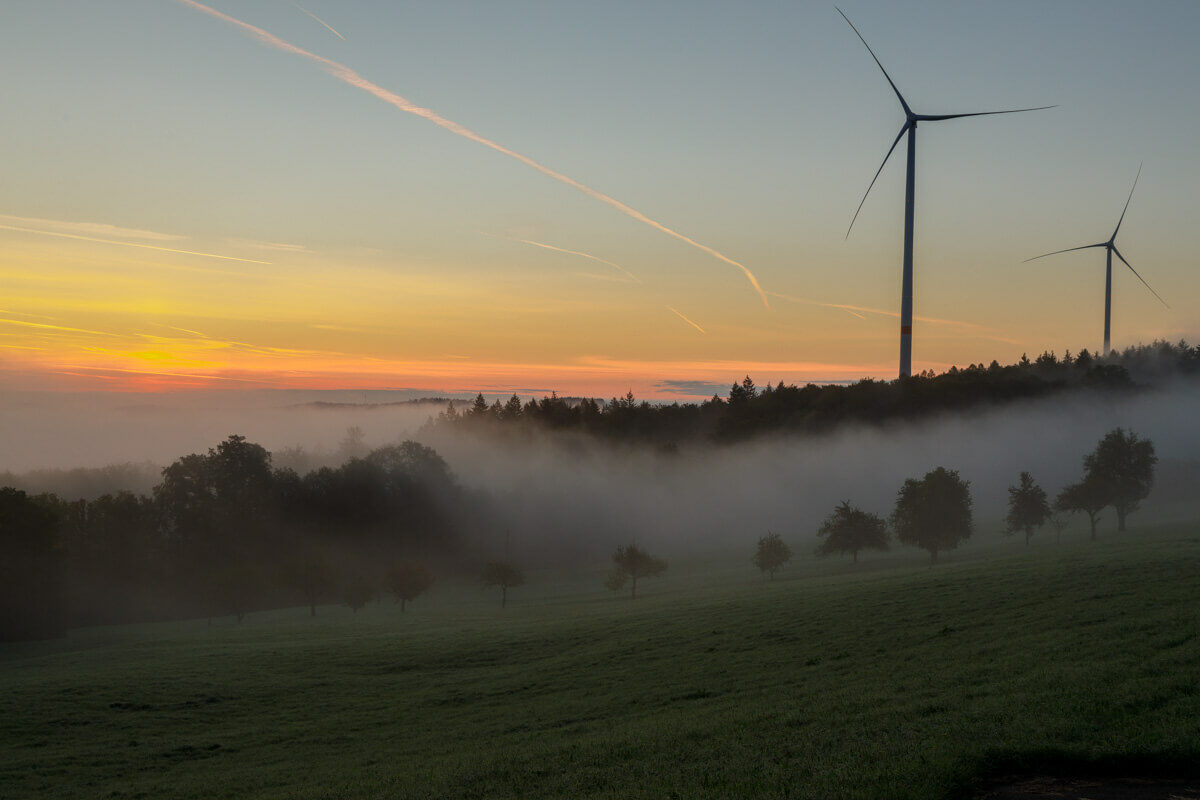
Fog everywhere - everywhere but in the forest
I decided to go to the forest in Baltmannsweiler. Here are many old beeches and some oaks, which are beautiful photo motifs. There is only one problem: there is no fog. The apple trees on the meadow next to the hiker’s parking lot are in dense fog. But the forest path is as clear as a polished diamond. Not a wisp of fog far and wide.
Anyway, I decide to walk a little through the forest. There are many forestry paths and small paths that depart from the main path. Surely a nice photo motif can be found here?
Well, not really. The light is not good, there is no fog, not even any good mushrooms can be seen. Either they have already been beaten away or are half rotten. That was probably nothing. Somewhat frustrated I take a small breakfast break and decide that I better go back to my car and go somewhere else.
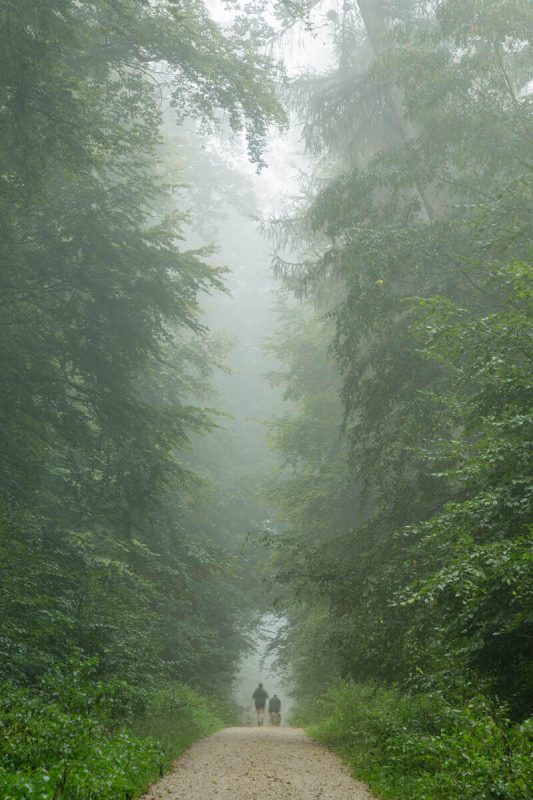
Woodland Photography - I almost made a mistake
I almost made the biggest mistake you can ever make in woodlany and any kind of landscape photography. Besides forgetting your memory card and spare battery. I do not go back the direct way, but the a bit further along the small path, which will lead me to the main path. The best decision I could make! Because only shortly after my break, a few meters further through the forest ist starts to show, fog!
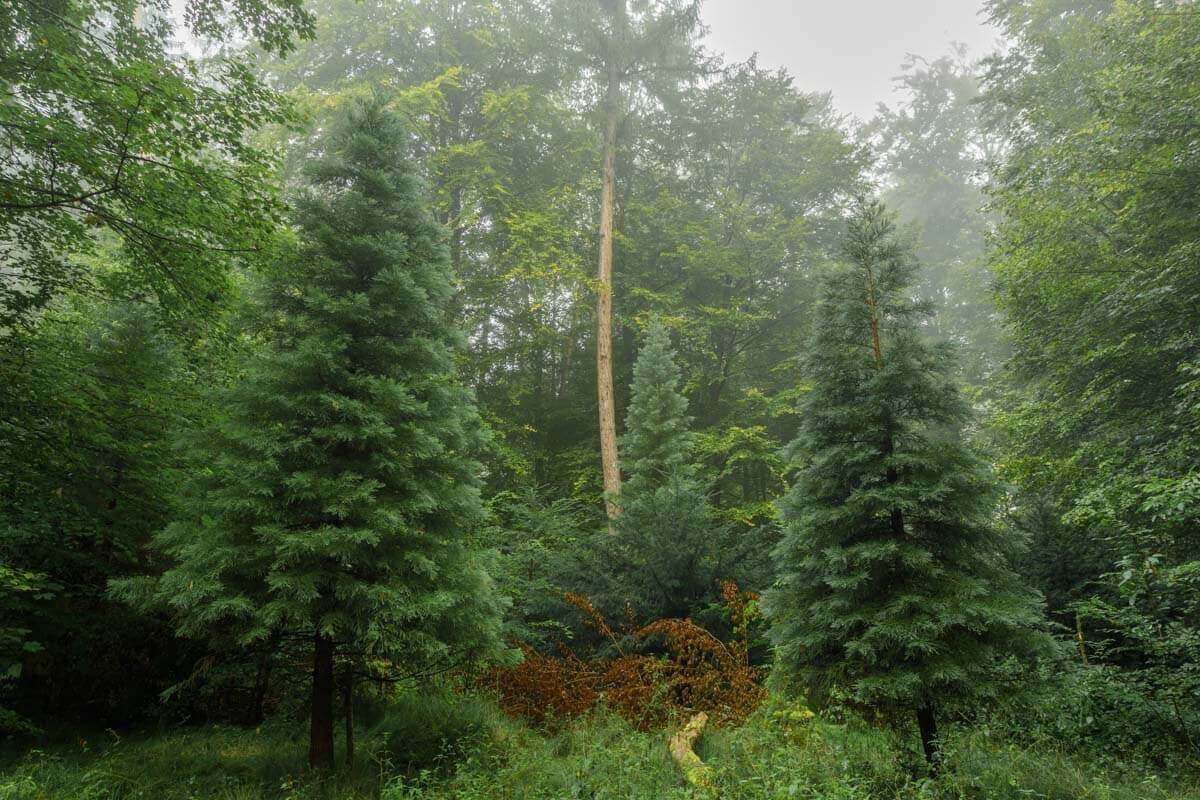
At first still timid, soon thicker and thicker clouds of fog move through the trees and immerse everything in a mystical light. Gladly I did not go back earlier, but have taken a break and still went the slightly longer way.
On the way to the main path I find then really beautiful motives. This old oak has done it to me particularly. Proudly it stands there, between the beeches. As if it wants to keep up the memory of the king. A patient model, which I photographed a lot.
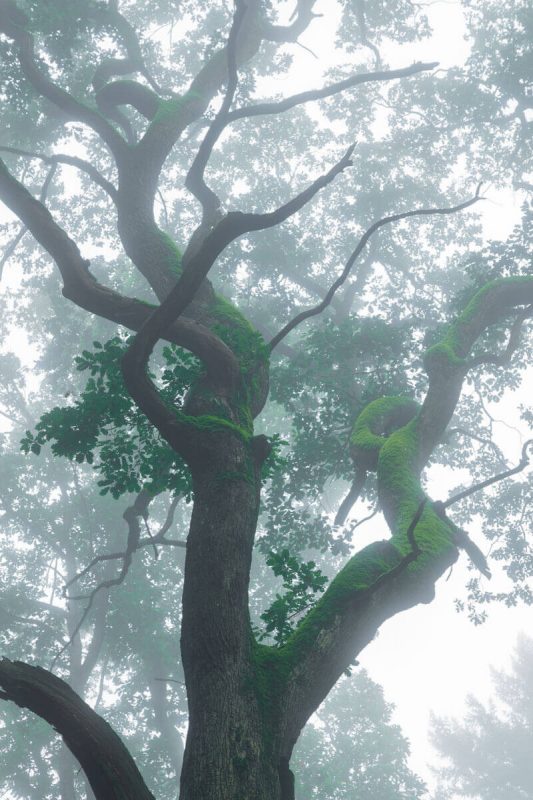
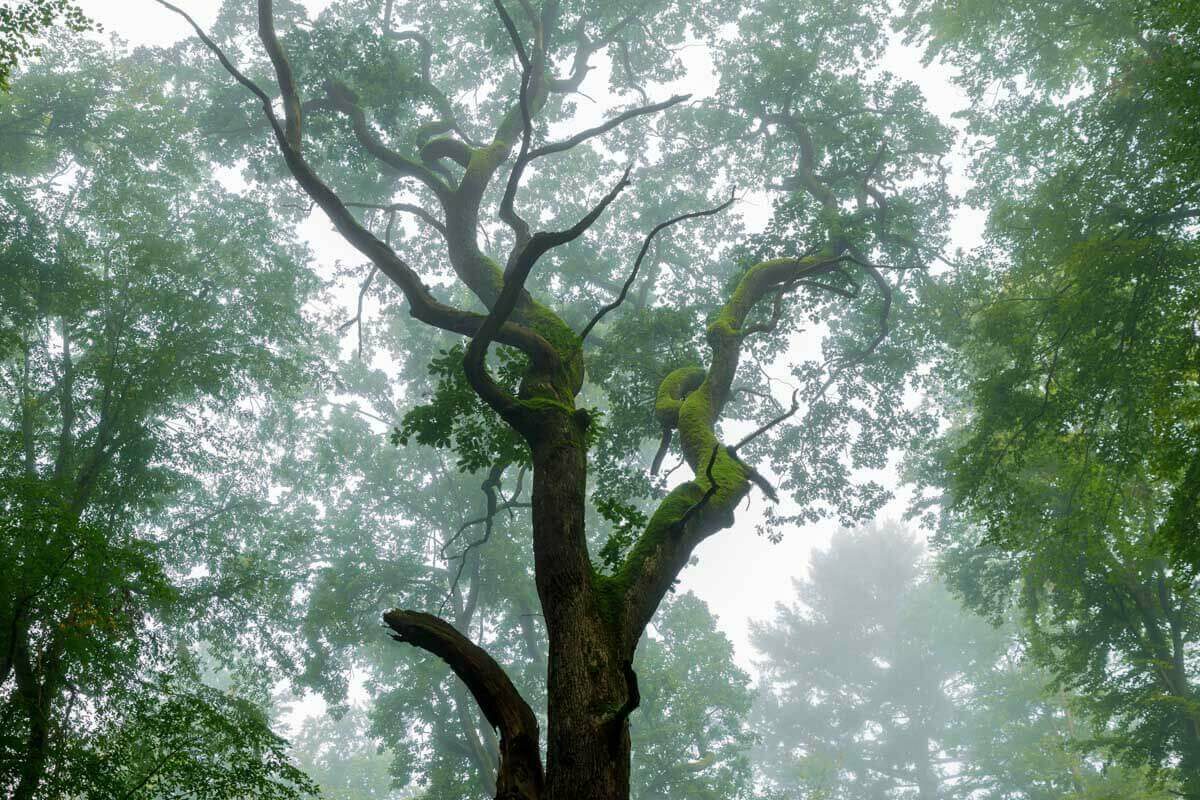
I continue to the “Schlösslesseen”, two small lakes in the forest, which are also in the fog. Here, too, I managed some really nice shots. I am glad that I am here and can take advantage of the fog.
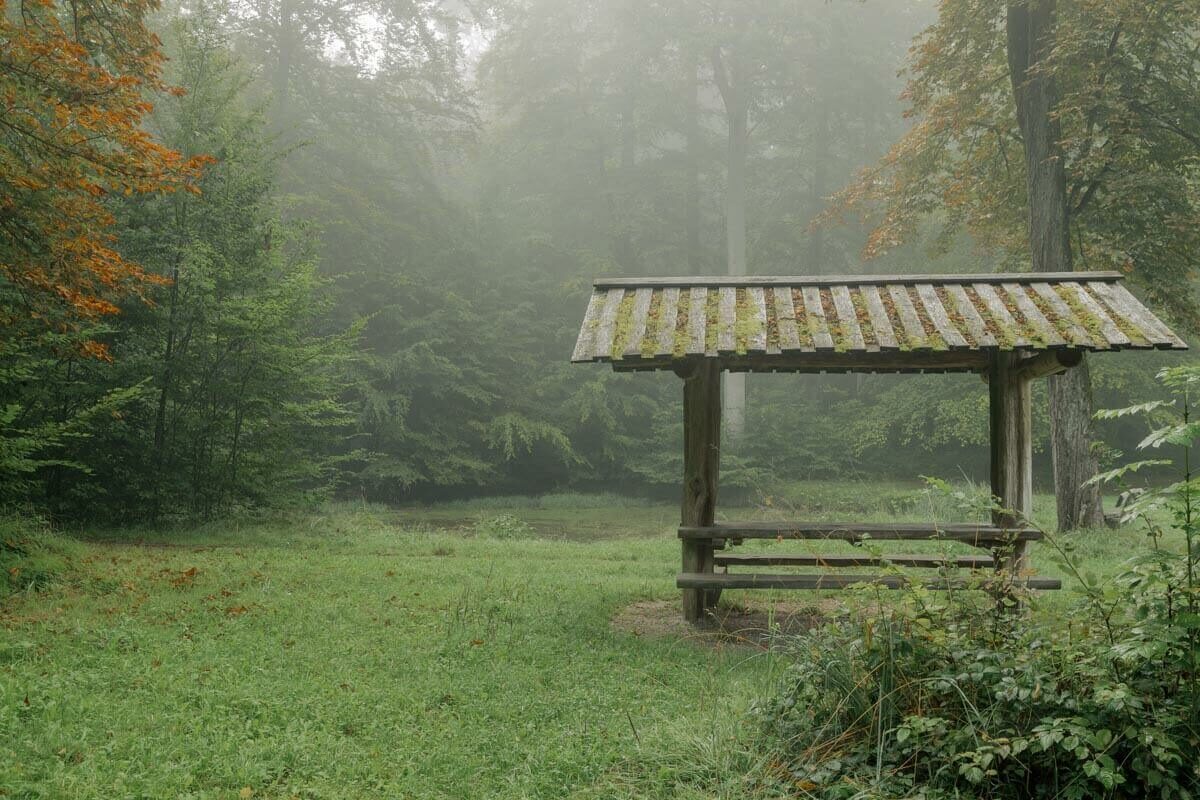
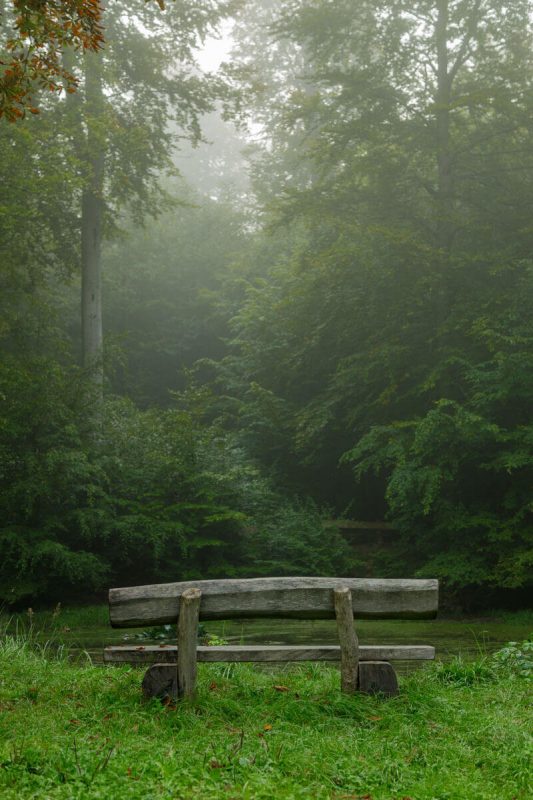
On the way back, which leads via the small path to the king (the remains of giant oak tree), there is unfortunately hardly any fog. The path is a little lower than the main trail. At least some clouds still waft through the higher trees. Later even some sunrays made it through the fog and clouds, which has led to really beautiful shots.
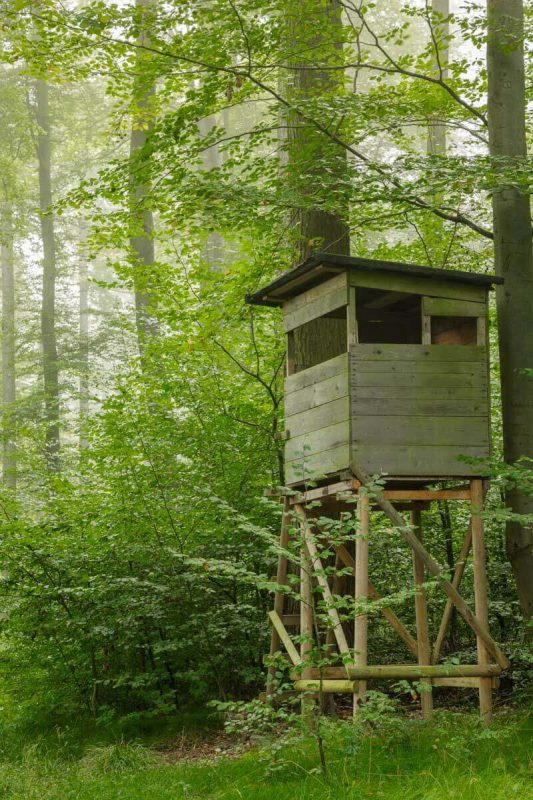
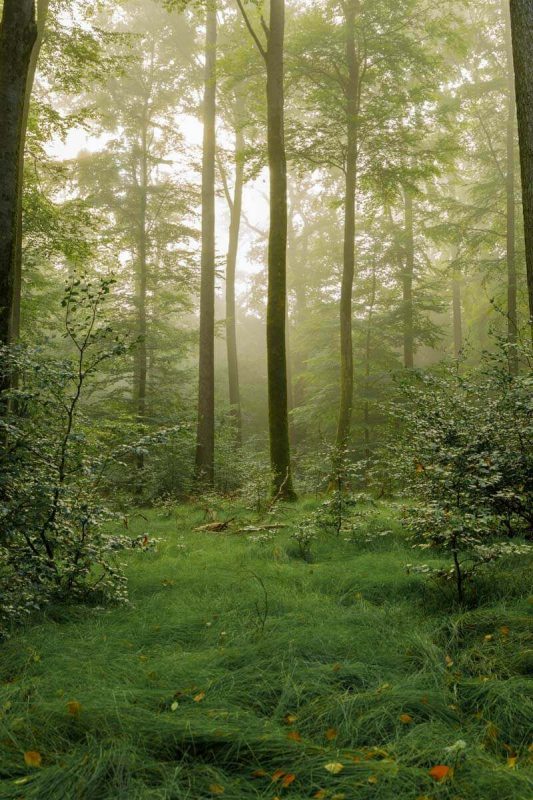
A small tree has caught my eye. I moved a little closer, took some pictures and then took a second breakfast break. But as soon as I sat down on an old tree stump and drank some water, I saw a glow in the corner of my eye. Immediately I jumped up and took advantage of the short time when the sun’s rays came through the mist and illuminated the little tree as if hit by a spotlight. For such mornings getting up way before sunrise is really worth it!
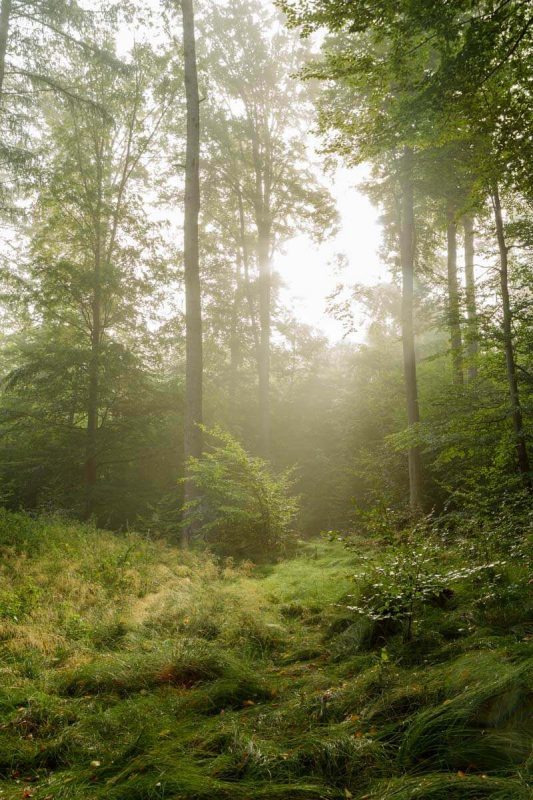
Woodland photography - The biggest mistake you can make
So, what is this mistake I was talking about? The biggest mistake you can make is to overturn your plan in the short term. Panicking from one place to another because you don’t immediately find the conditions you were hoping for. This is called FOMO, fear of missing out.
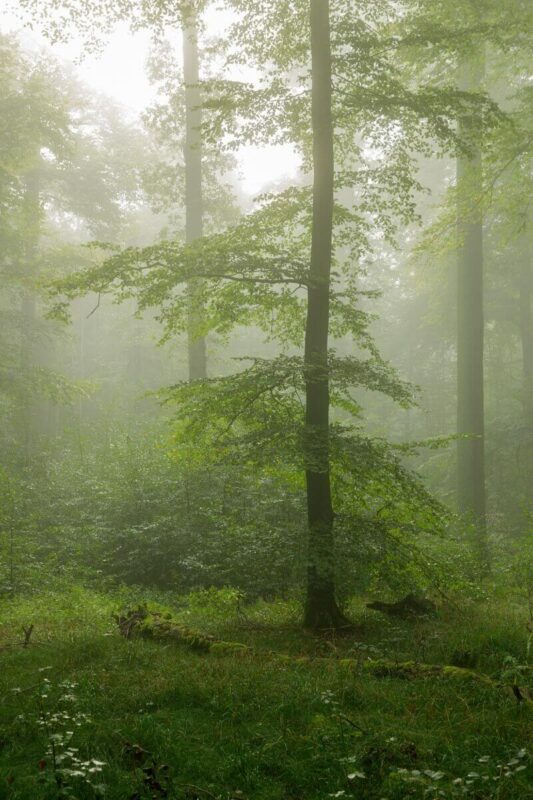
But this will eventually lead to exactly the opposite. You will miss the best moment if you rush from one place to the next. Into the forest, out of the forest, into the car, out of the car, into the forest and it’s all over.
Believe me, I’ve been there! Not today, but often enough. No fog there, no sun, I’ll try the woods 20 minutes away, over on the opposite mountain. No sooner had I arrived there than the most beautiful fog rolled in at my point of origin. Countless times I have already experienced it.
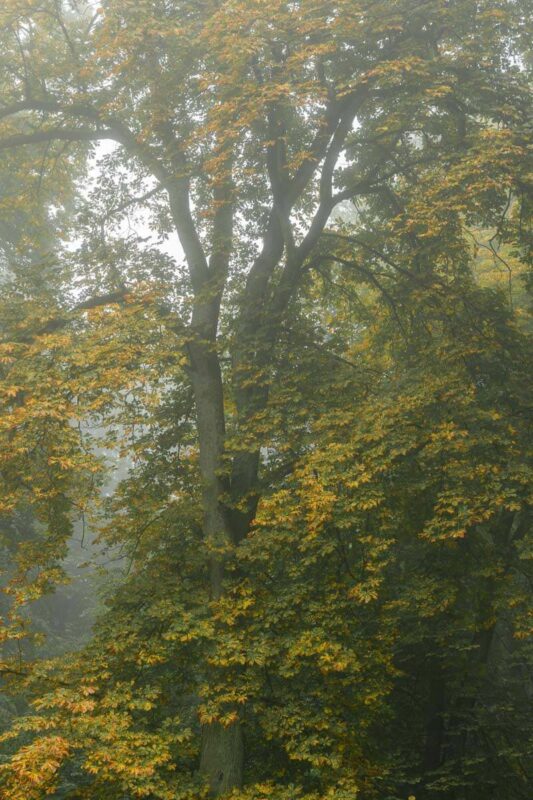
Once you’ve decided on a patch of forest or a specific location, stick with it. Sometimes conditions won’t change, but often enough your patience will pay off.
Have you made this mistake, too? What do you think is the biggest mistake in photography? Let me know in the comments.
Melde dich zum Newsletter an und nimm automatisch am Gewinnspiel teil!
(Den Gewinn findest du bei den Teilnahmebedingunen)
Thank you!
You have successfully joined our subscriber list.
Always best light
wishes Tanja
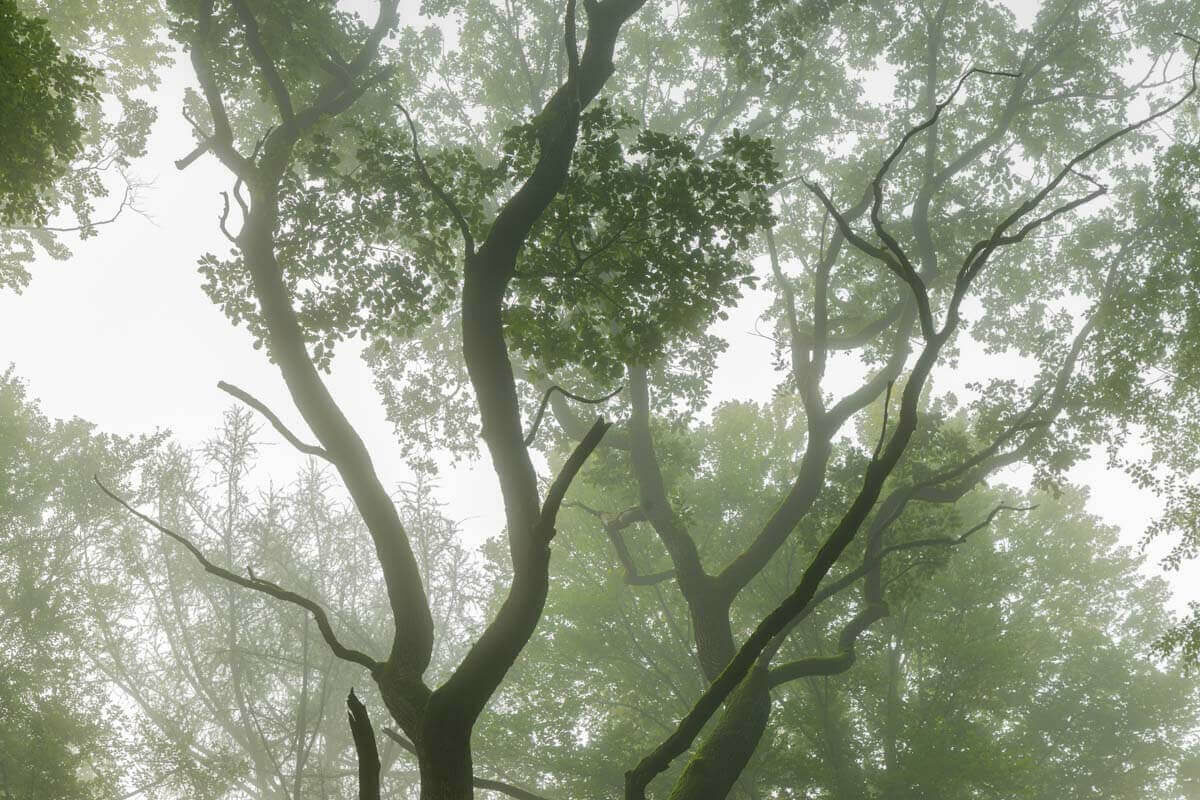
Woodland photography in summer – tipps and a morning walk
Summer is the least interesting season for most landscape photographers. And I also find the months of July and August the least photogenic. It gets light early, dark late and in addition nature is somehow in an intermediate state. The spring flowers have faded, the fresh green is meanwhile richer and darker, but the autumn colors are still waiting. In addition, the heat makes me rather sluggish. You’ve probably noticed, these are all excuses why you should sleep in on the weekend instead of doing the only right thing: dedicating yourself to forest photography in summer.
So no more excuses. The weather was good, no storm, rain or thunderstorm was announced. And my inner clock likes to throw me out of bed at 5 a.m. even on weekends anyway. And so some beautiful photos were taken on this sunny morning, which I want to show you today.
Your trust is extremely important to me: This article contains referral links (Affiliate-Links). If you book a hotel or buy a product through one of the links, I will receive a small commission. You will not incur any additional costs and you support this blog. Thank you very much! Your Tanja
Forest photography in summer - a special challenge
Forest photography in summer has always been a challenge for me. It has always been difficult for me to find beautiful motifs. The leaves of the trees are no longer as fresh as in spring, the light is also only really nice early in the morning and late in the evening. Spring flowers bloom almost only in spring, mushrooms, on the other hand, are still rather rare.
But if you open your Aigen, then you can find even directly on the roadside many beautiful motifs. So forest photography in summer doesn’t have to be automatically boring. All you need is an alarm clock and motivation to get up a little earlier.
Forest photography in summer - pictures are everywhere
A few flowers still bloom along the way. Like for example these bellflowers. I tried different exposures. Very bright and very dark. But I like this slight moody look with this motif better than the bright images. And what do you think?
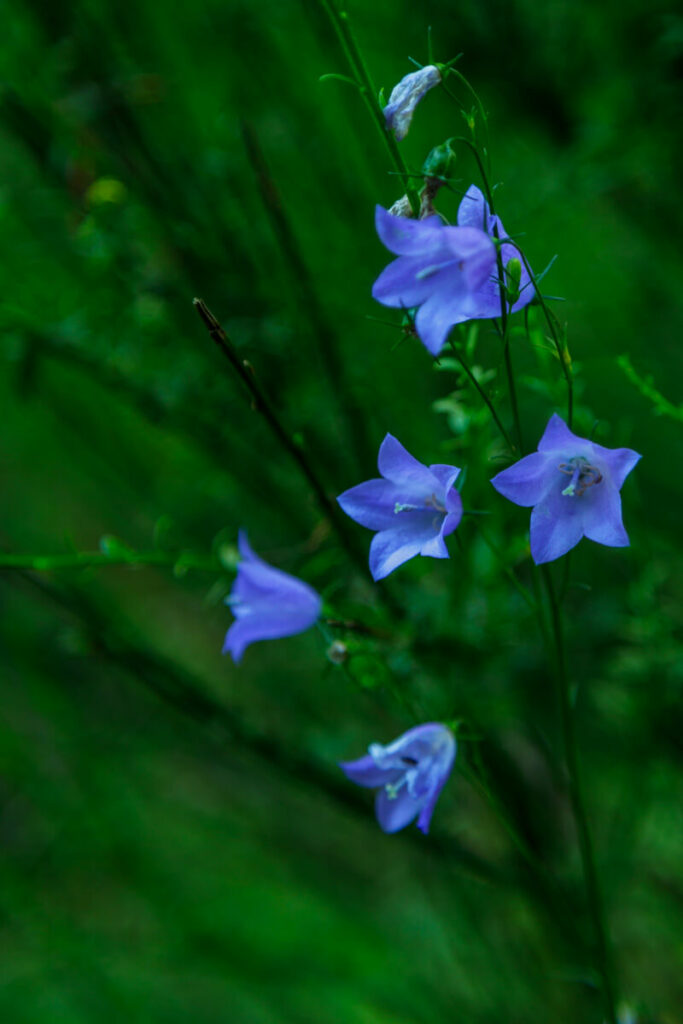
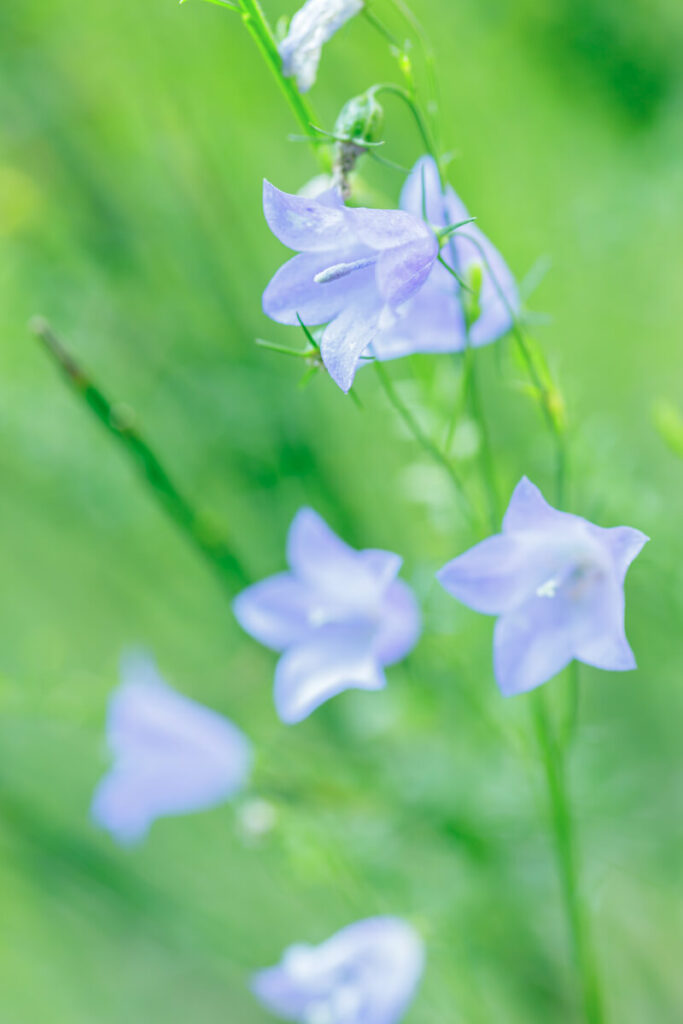
The sun was at the right angle at the right time. Some golden rays of sunlight fell through the leaves. It’s fascinating to see how quickly the light changes. And what a slight change in position of the camera can do. There are only 20 minutes between the following pictures. And only a few meters I walked further up the path. But what was even more exciting were the individual spots that were illuminated by the light and almost glowed golden.
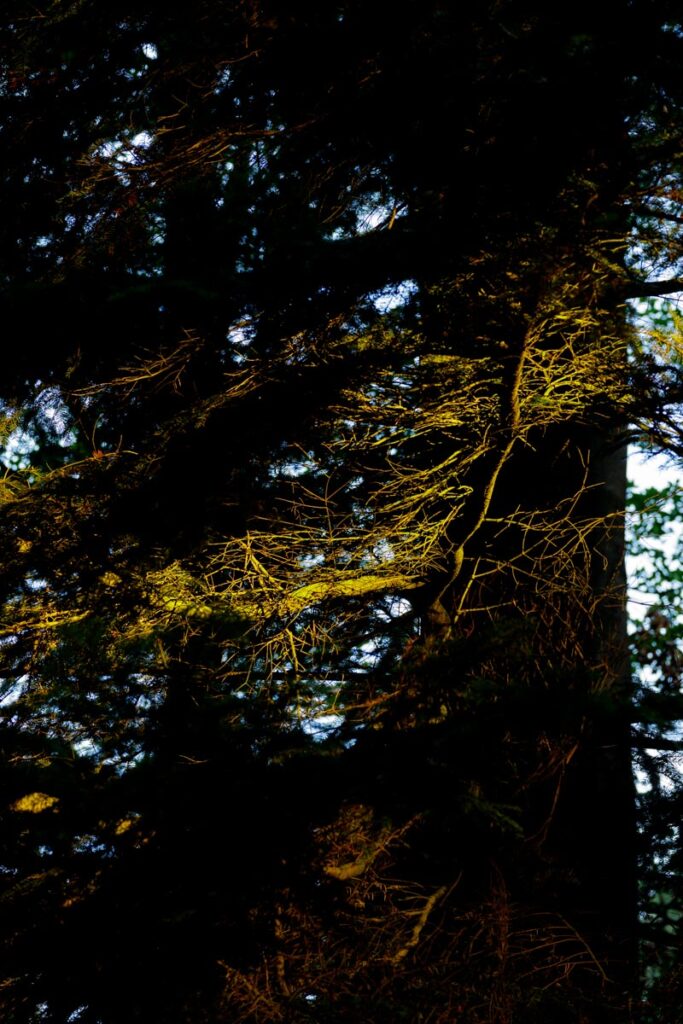
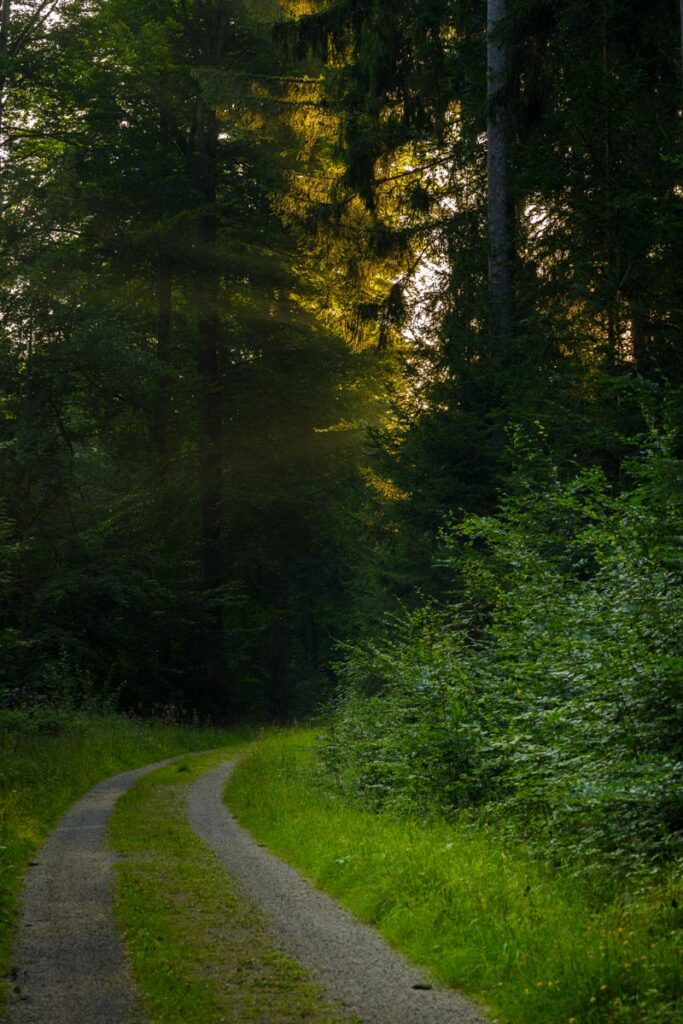
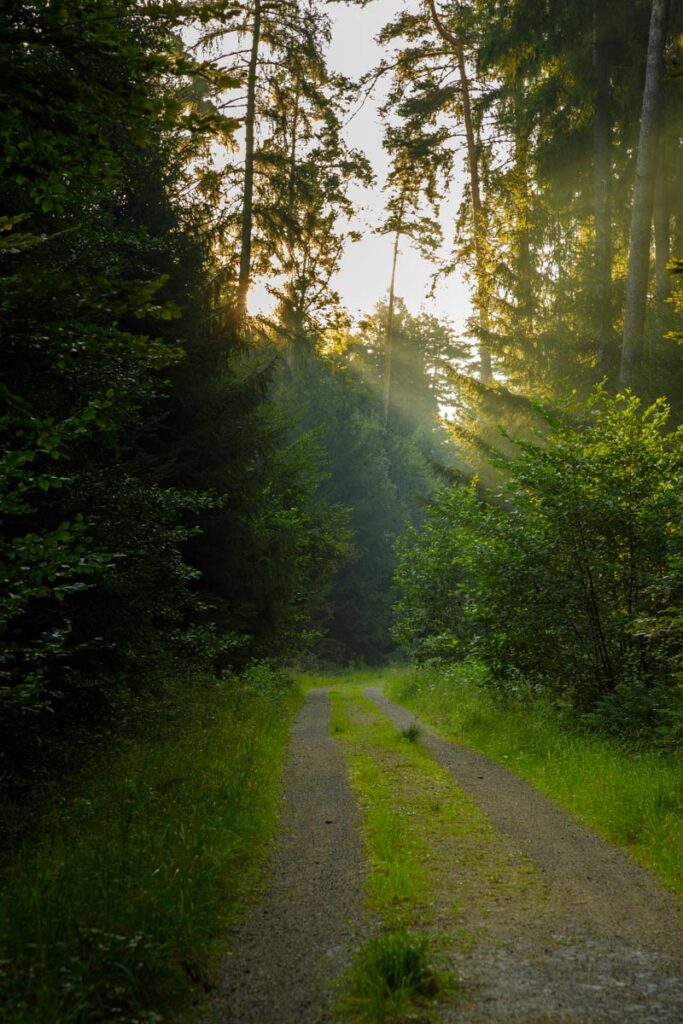
A few weeks ago, I managed to take a photo in which a forget-me-not was only recognizable as an outline. I had hoped to be able to create a similar photo with a different motif. Unfortunately, I didn’t succeed, but I still managed to take some really nice backlit pictures.
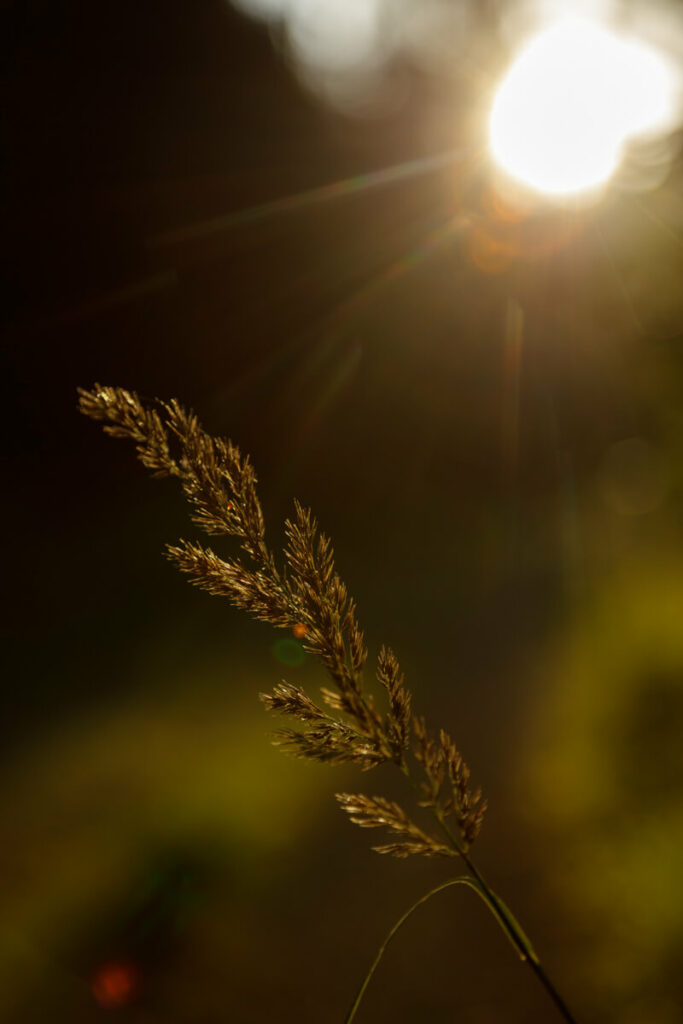
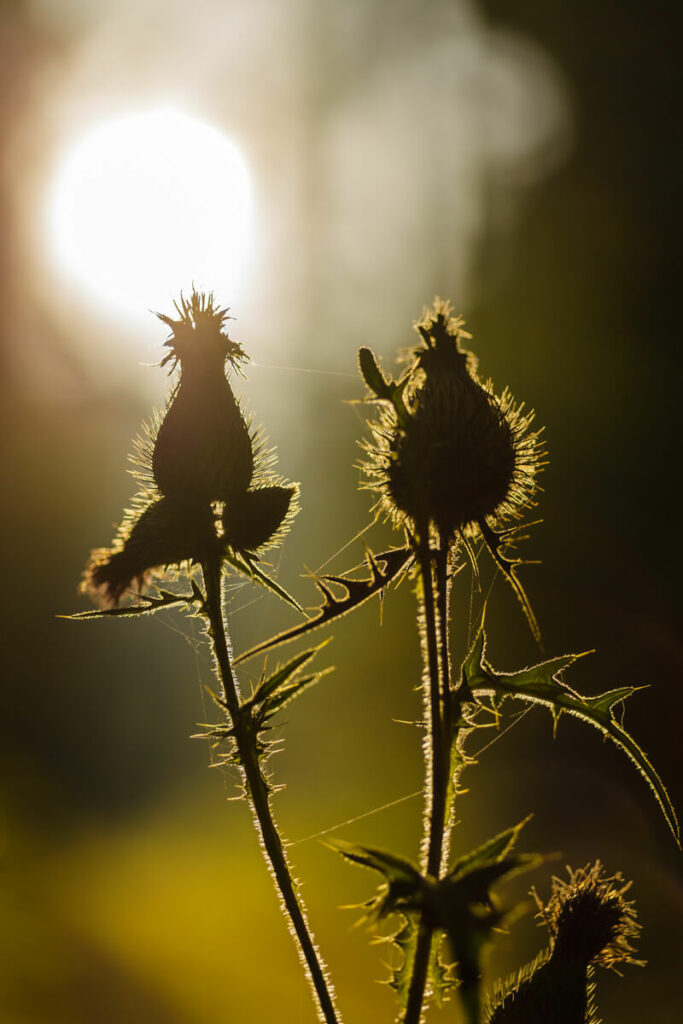
A little breakfast I also found! Wonderfully sweet raspberries that grew right on the edge of the path. The raspberries were just as sweet as they look in the picture! Unfortunately, the bush was very small and only four or five raspberries were growing. But who could have resisted this sight?
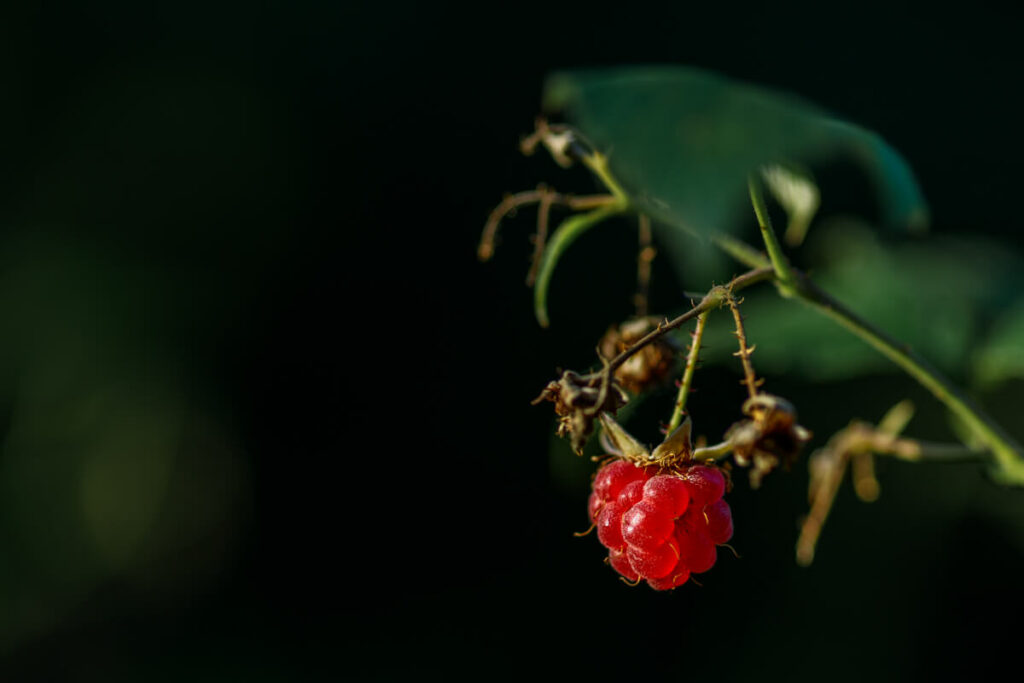
Forest photography in summer - change your perspective
In the meantime, the sun was already a little higher. But even then, exciting photos can still be taken. A view upwards opens up completely new perspectives. And that’s what photography is all about, perspective. With my wide-angle lens, the view from below into the treetops looks much more impressive than with a standard lens.
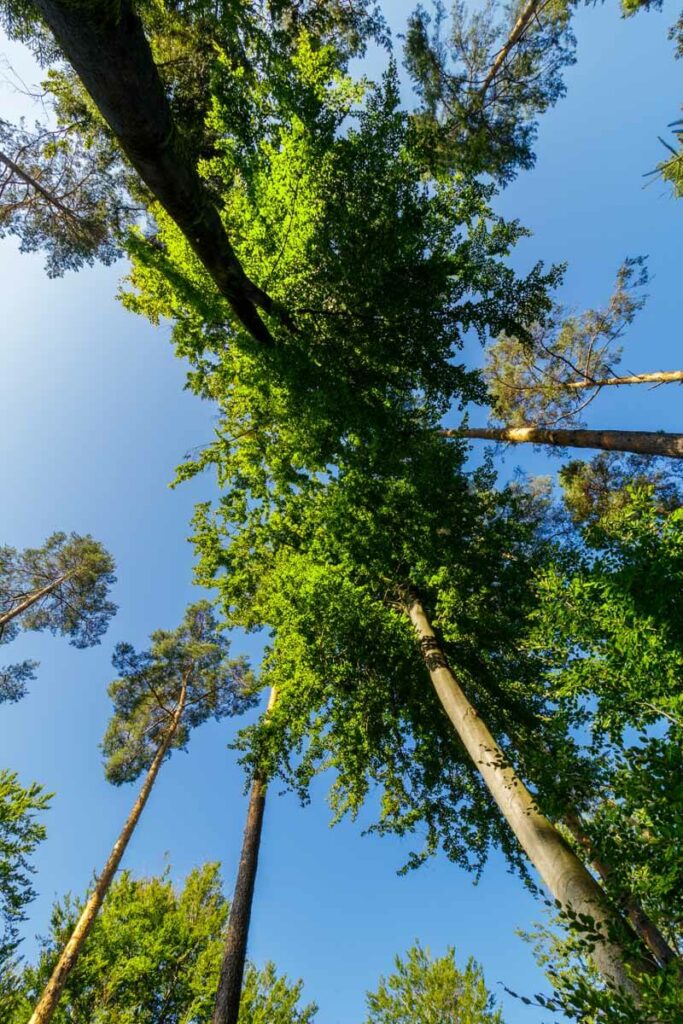
Details, on the other hand, can be shown better with my 24-105mm lens or even a telephoto lens. For this it is always worthwhile to take a look at the trees. Because sometimes the tree as a whole is not the most interesting subject, but its branches or bark. In this case, it seemed as if two dark branches framed the two lighter ones.
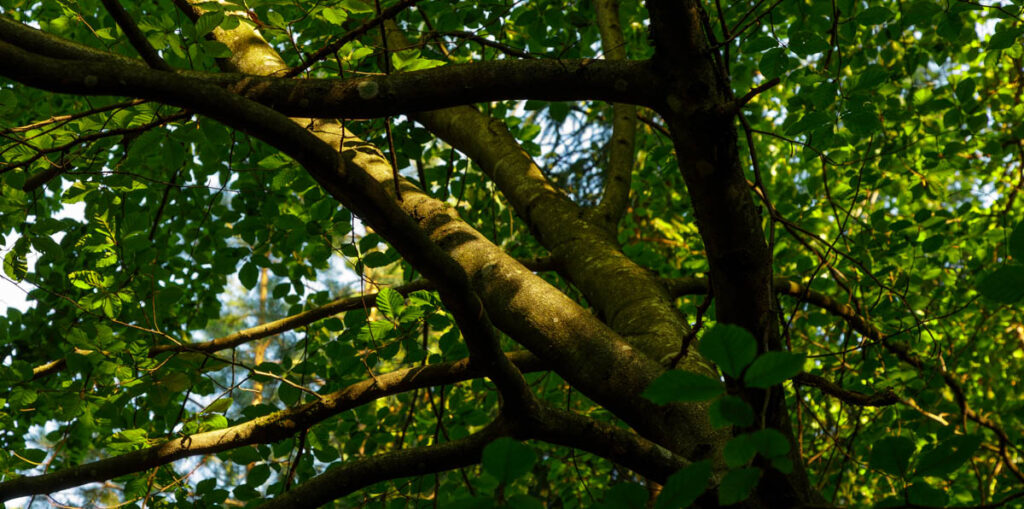
But at some point it was time for the way back. Especially because I know myself and know that I stop at every interesting motif. And indeed there was still the one or other opportunity to stop. Especially this leafless tree caught my eye. Illuminated by the warm sunlight it stood there. And after a short time another ray of light fell on the tree standing further back. So it seemed as if the two tree trunks were shining, while around them the leaves were still in the shade.
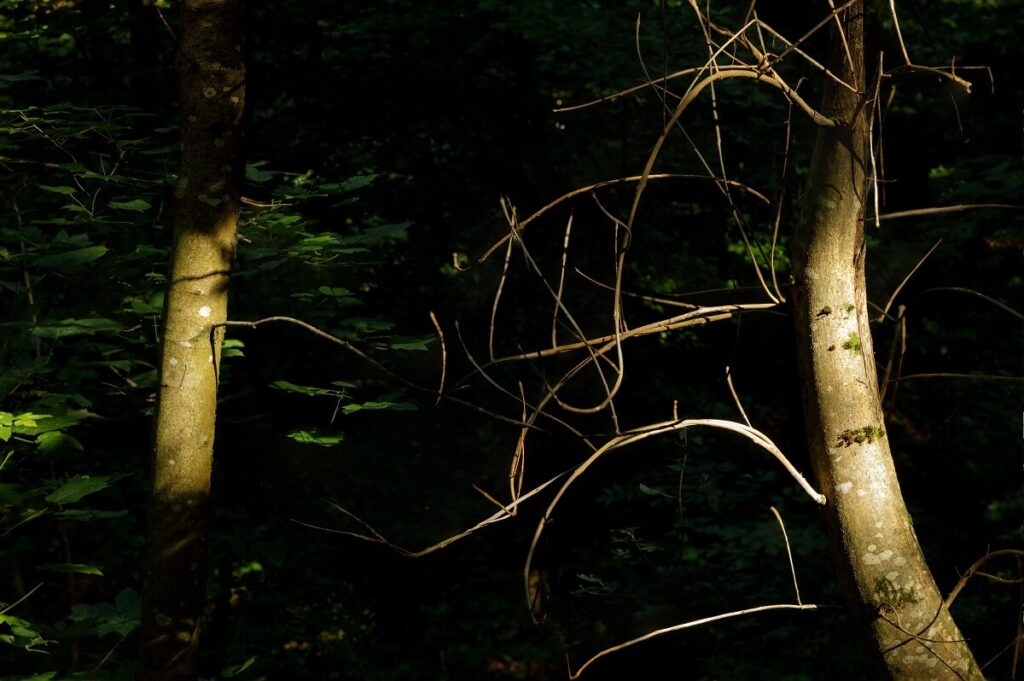
Tipps for better woodland photos in summer
If you want to shoot dramatic photos even in summer, you need to be in the forest appropriately early. In the last few months, I’ve often been in the woods at sunrise. That is really early. In our area, however, the forests are very mountainous, so the light is at its best 1-3 hours after sunrise. Find out for your forest when the light is best and set your alarm accordingly early (or late) next time.
Turn around more often! The light changes within seconds. A subject that was in shadow a moment ago may now be illuminated by the sun, and vice versa.
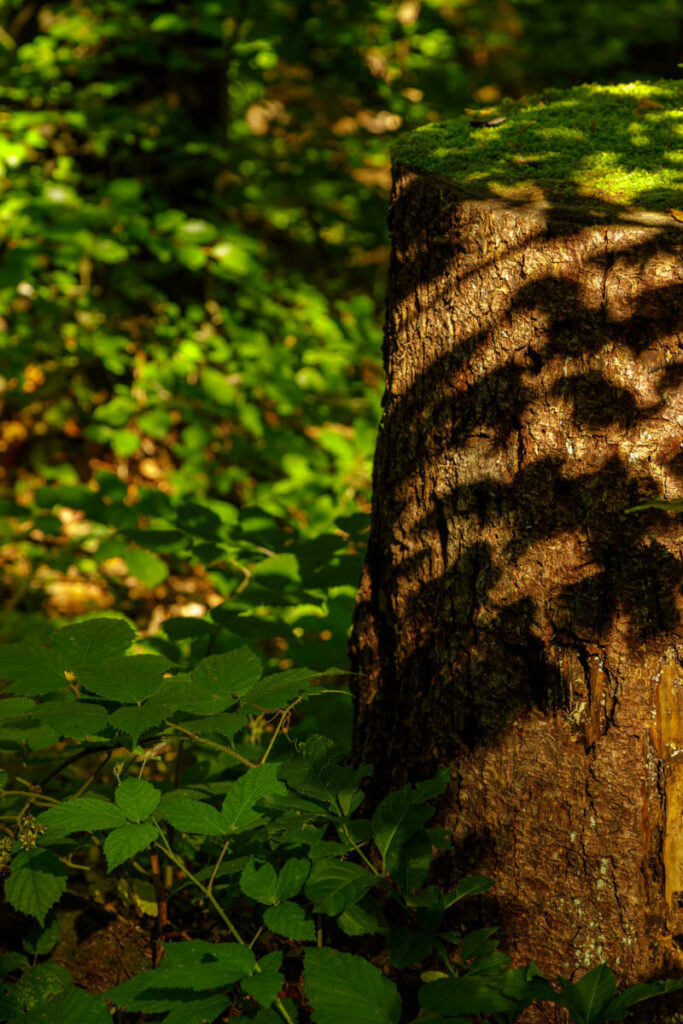
And if all else fails, take the opportunity to explore new forests. Find places you want to revisit in the rain or in the fall or winter and rehearse your composition. On the computer, see if your idea really works or if you’ve overlooked any distracting branches or trees.
Want more tips about forest photography? Then sign up directly for the newsletter. You will automatically be entered into the next competition and will receive an email from time to time with photo tips that are not available on my blog.
From September 2021 you can also learn more about forest photography in workshops in very small groups. If you don’t have any experience yet, but want to try photography or learn the basics of photography, I also have the right workshops for you. If you have any questions, just send me a message!
Best light wishes
Your Tanja
Melde dich zum Newsletter an und nimm automatisch am Gewinnspiel teil!
(Den Gewinn findest du bei den Teilnahmebedingunen)
Thank you!
You have successfully joined our subscriber list.
